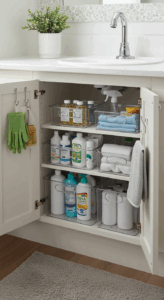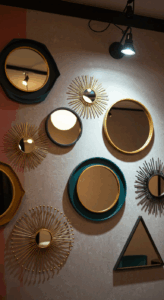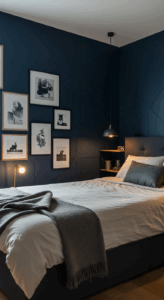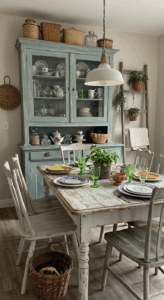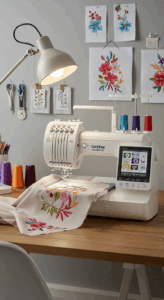1. Embrace Multi-Functional Furniture: The Key to Space Efficiency
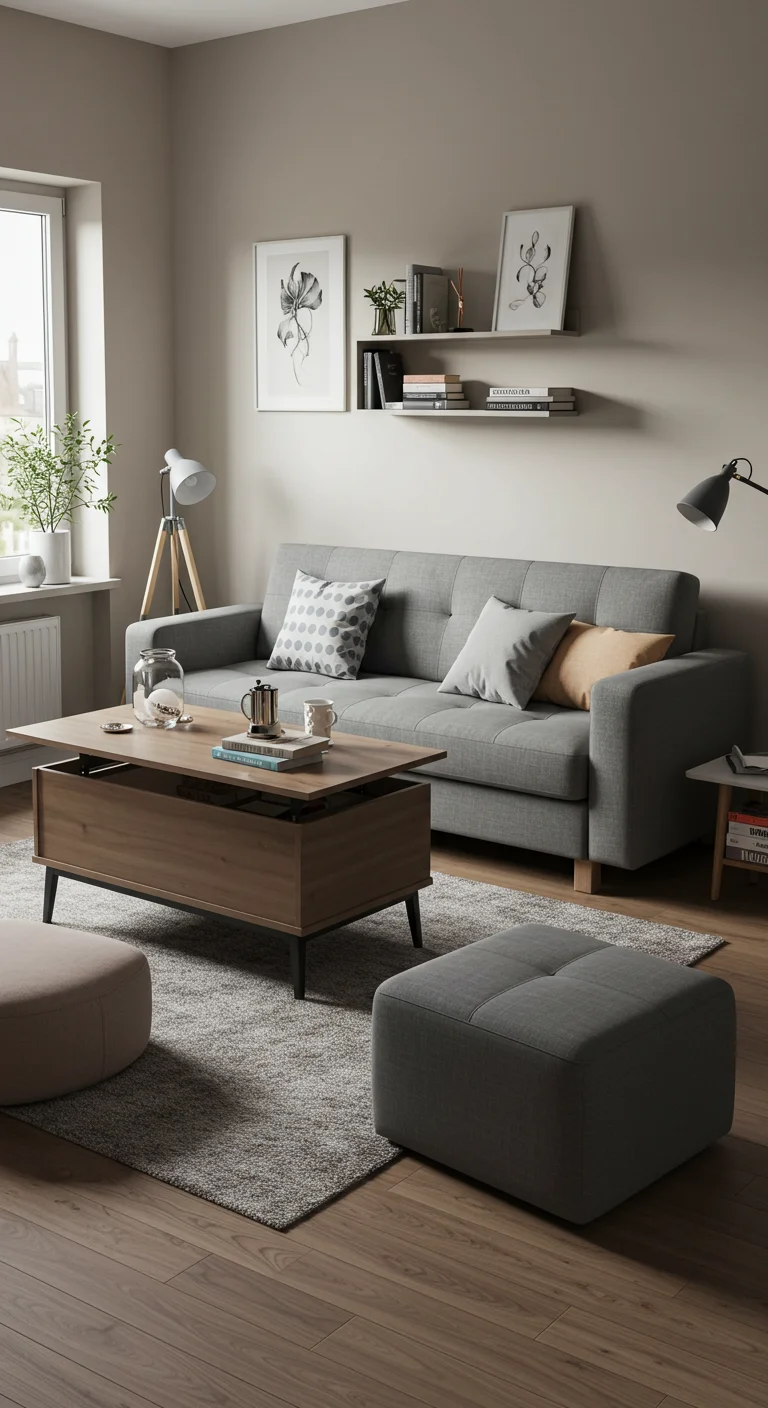
Embracing multi-functional furniture is essential for maximizing space in small living rooms. Look for pieces that serve dual purposes, such as a coffee table that doubles as storage, a sofa bed for accommodating guests, or an ottoman that can be used as both seating and a table. This strategic approach not only saves space but also enhances the room’s functionality, allowing you to keep clutter at bay while still enjoying a stylish and comfortable environment. When choosing multi-functional furniture, consider your lifestyle needs and select items that seamlessly blend with your decor, ensuring that each piece contributes to a cohesive and inviting atmosphere.
2. Vertical Vibes: Utilizing Wall Space for Storage and Style
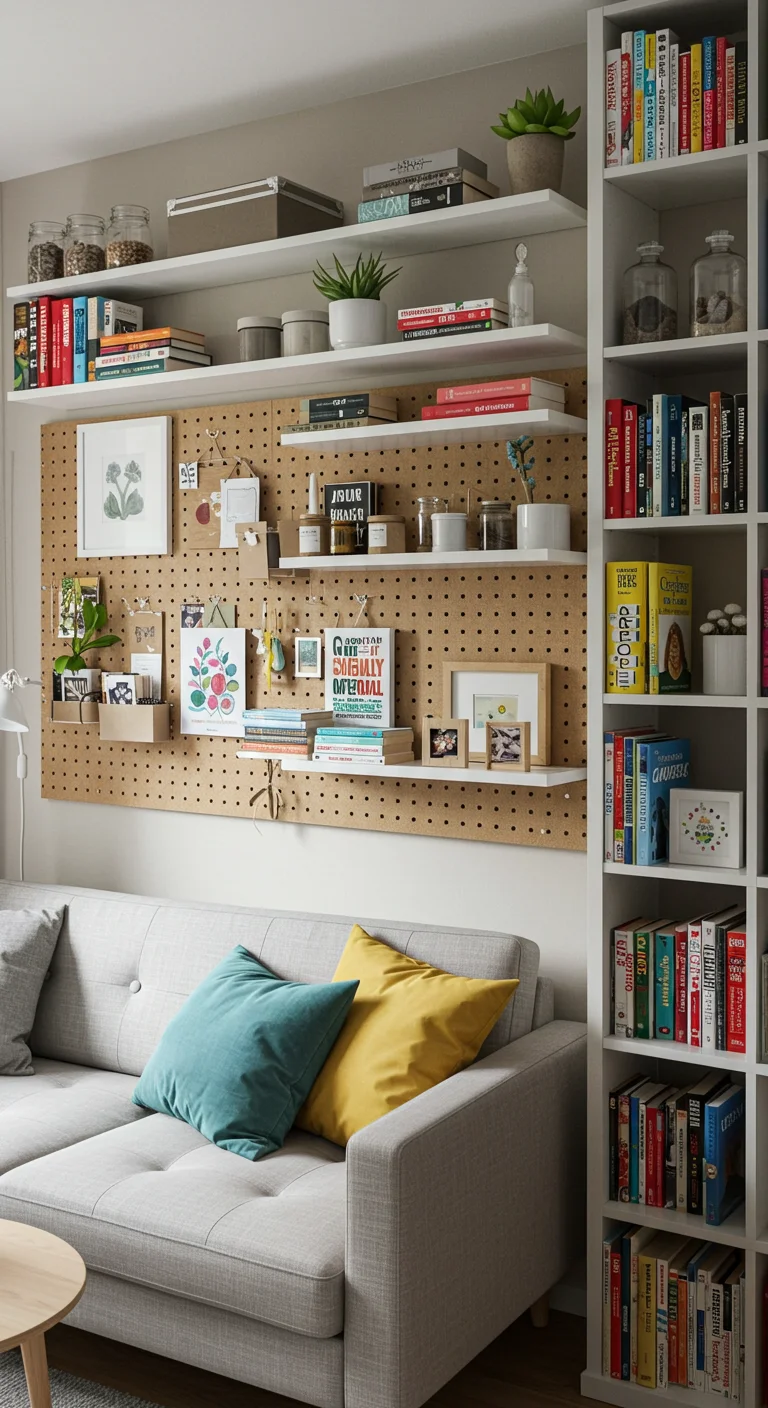
To maximize space and add personality to your small living room, consider utilizing vertical wall space for both storage and style. Install floating shelves to display books, plants, or decorative items, creating an eye-catching focal point while keeping the floor clear. Vertical storage solutions like tall bookcases or wall-mounted cabinets can help organize your belongings without occupying precious square footage. Incorporate pegboards or wall hooks for hanging items such as bags, hats, or even art, turning your walls into functional design elements. Additionally, choosing light-colored shelves or cabinets can create an illusion of openness, making your living room feel more spacious. By creatively using vertical space, you can enhance the aesthetics and functionality of your small living area, making it both stylish and practical.
3. Light It Up: The Power of Mirrors in Small Spaces
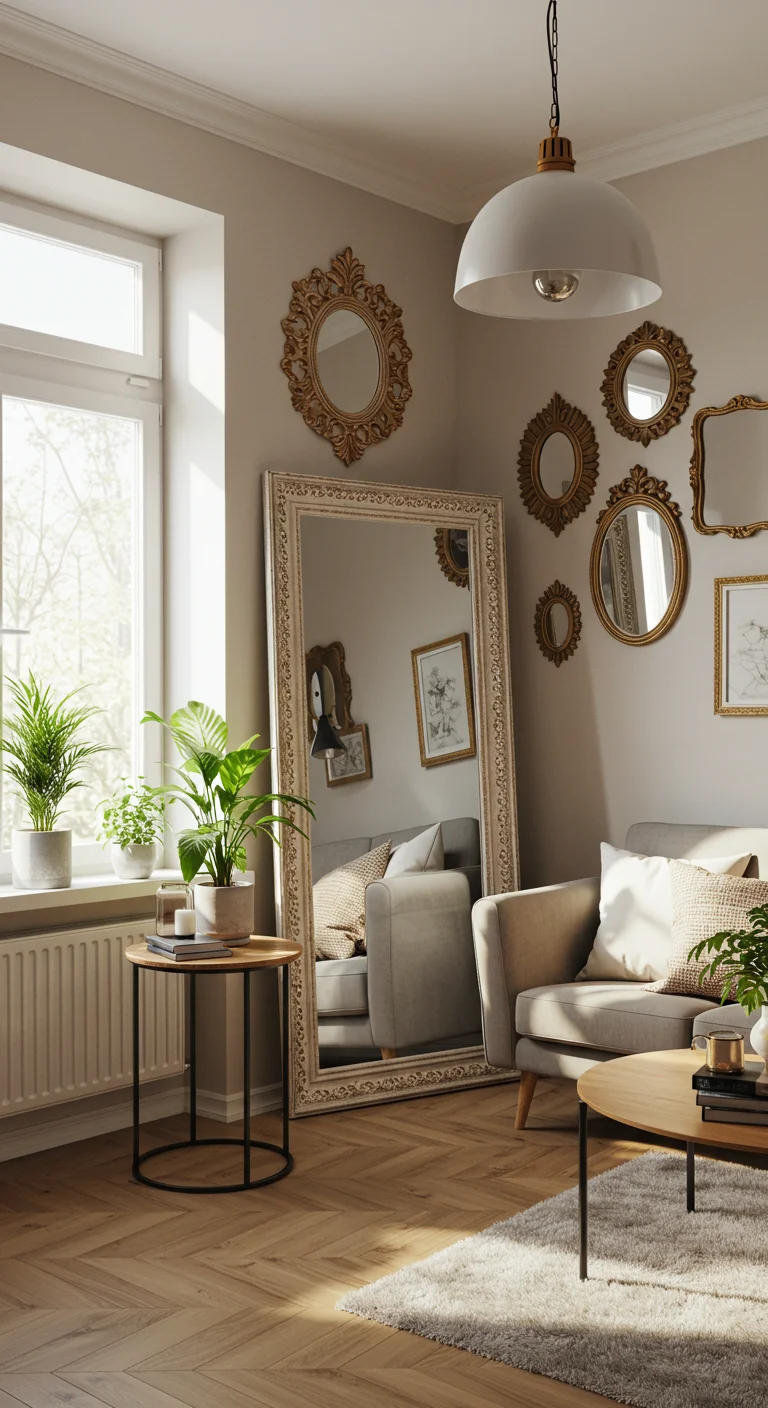
Mirrors are a powerful tool in small living rooms, as they can create an illusion of space and enhance natural light. Strategically placing a large mirror opposite a window can reflect sunlight and brighten the room, making it feel more open and airy. Consider using multiple smaller mirrors in various shapes and sizes to add visual interest while still maximizing light reflection. Additionally, mirrored furniture, such as coffee tables or side tables, can further contribute to a sense of spaciousness. When selecting mirrors, opt for stylish frames that complement your decor while ensuring they are proportionate to the space. With the right placement and design, mirrors can transform your small living room into a luminous and inviting area, making the most of every square inch available.
4. Color Psychology: Choosing the Right Palette to Open Up Your Room
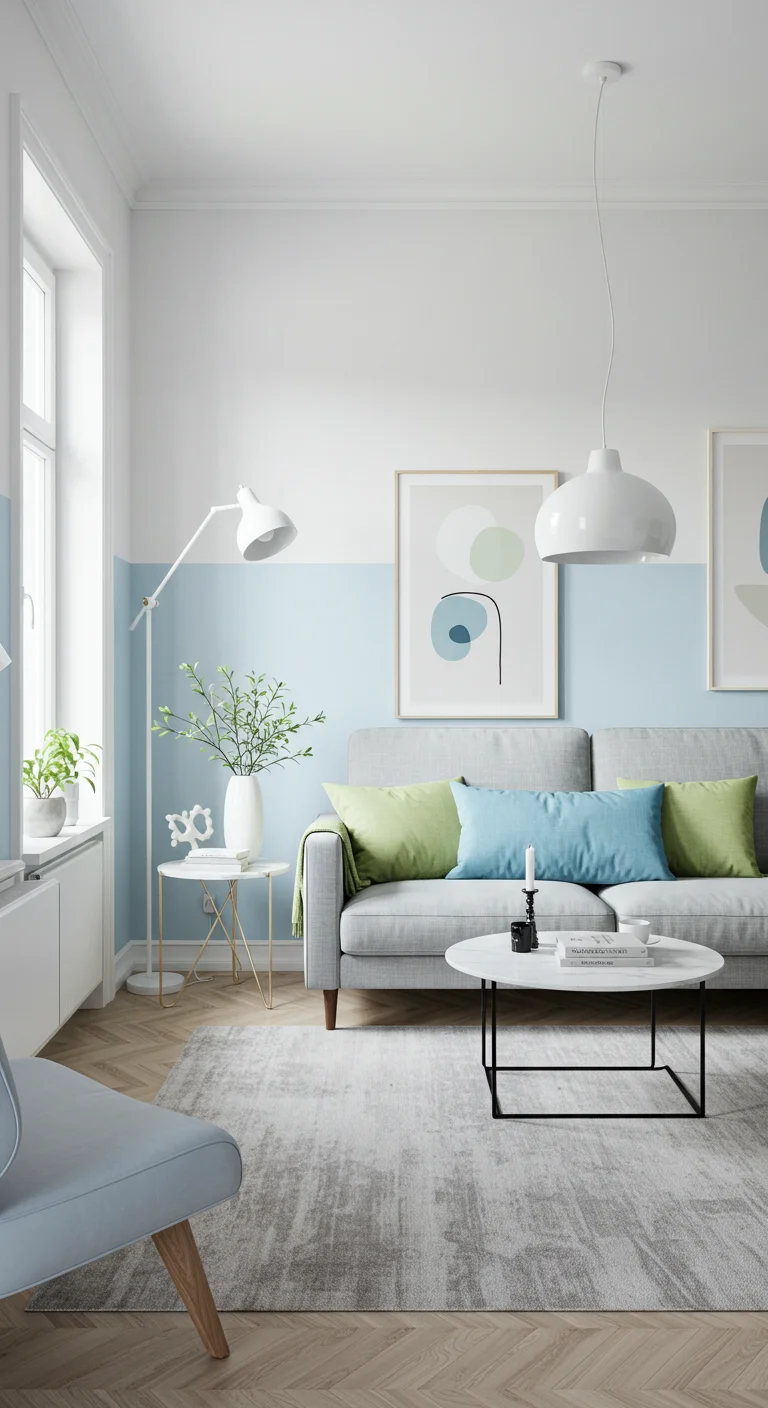
Color psychology plays a crucial role in making small living rooms feel more spacious and inviting. Light hues such as soft whites, pastel blues, and gentle greens can create an airy atmosphere, reflecting natural light and visually expanding your space. Conversely, darker colors can make a room feel cozy but may also constrict it visually. To optimize the perception of space, consider using a monochromatic palette with varying shades of a single color; this technique adds depth while maintaining cohesion. Accents of bolder colors, such as vibrant cushions or artwork, can bring personality and contrast without overwhelming the room. Ultimately, selecting the right color palette not only enhances the aesthetics but also influences mood and functionality, making it essential for small living areas.
5. Go Minimalist: Less Clutter, More Space
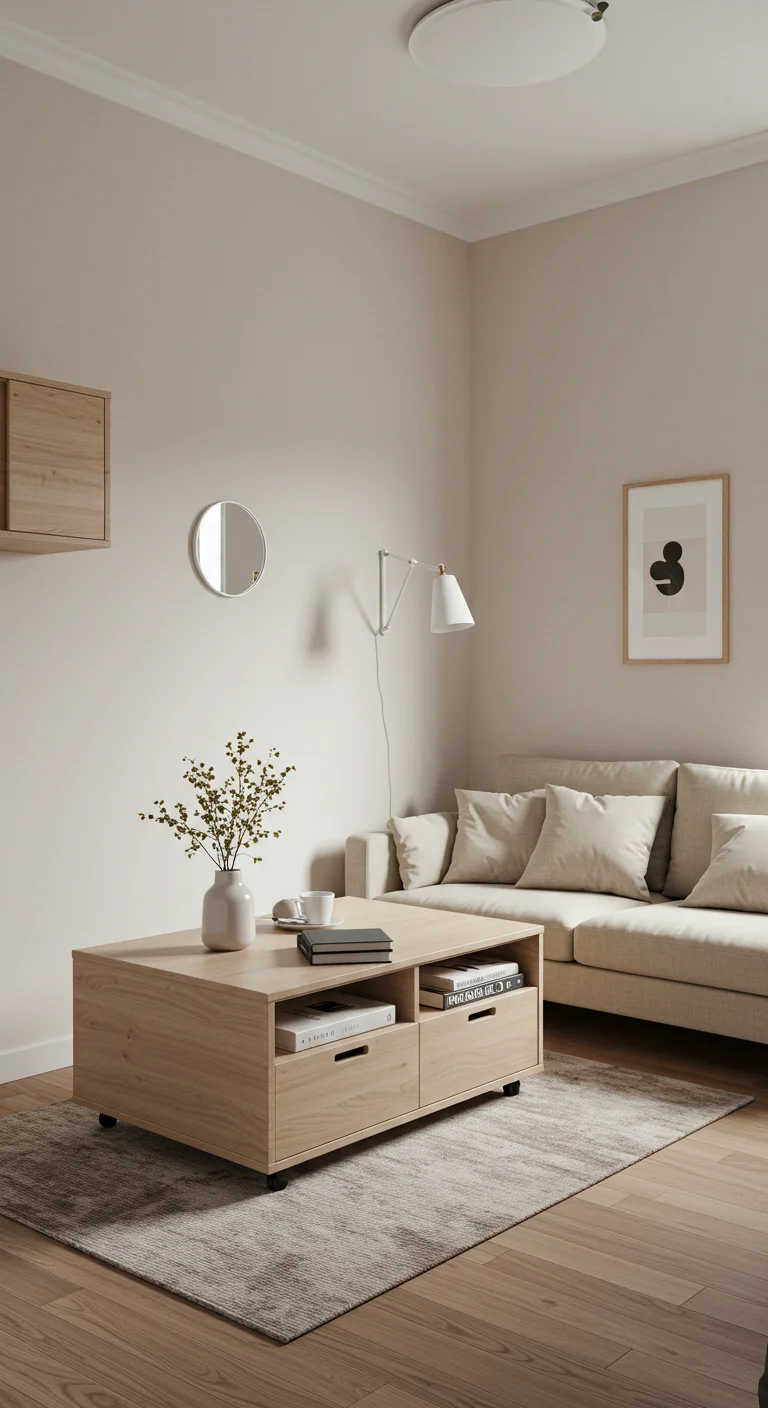
Embracing a minimalist approach in your small living room can significantly enhance both the aesthetics and functionality of the space. Start by decluttering and removing items that do not serve a purpose or bring joy. Opt for multifunctional furniture, such as a coffee table with storage or a sofa bed, to keep the area open and free of excess items. Choose a neutral color palette and simple decor to create an illusion of more space, while strategically placing mirrors can reflect light and make the room appear larger. Finally, limit decorative items to a few key pieces that resonate with your style, fostering a serene environment that feels spacious and inviting.
6. Smart Seating Solutions: Ottomans and Benches with Hidden Storage
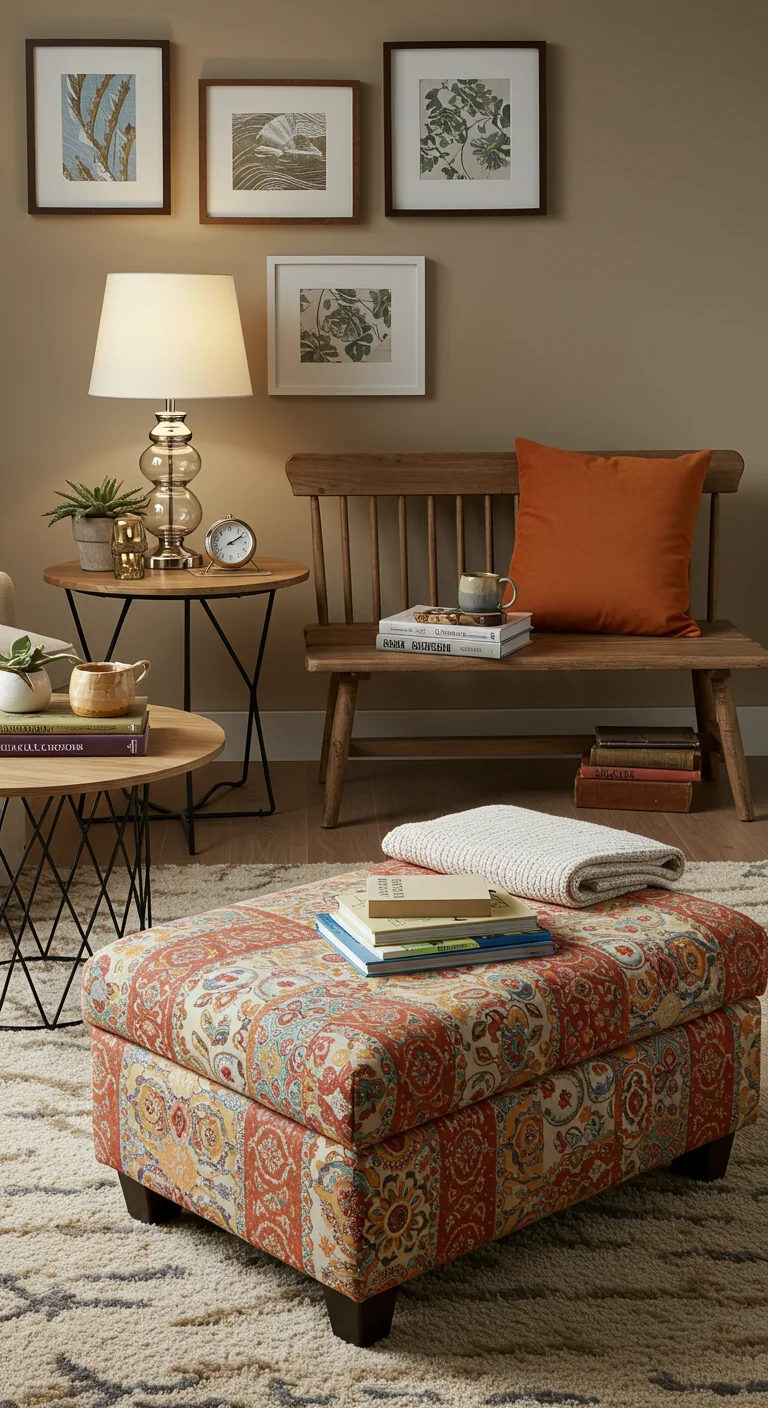
Smart seating solutions like ottomans and benches with hidden storage are essential for small living rooms, providing both functionality and style. These versatile pieces serve dual purposes: they can be used as extra seating for guests and as clever storage options for items like blankets, books, or board games. Look for designs that complement your existing decor, such as upholstered ottomans that add a pop of color or sleek wooden benches that bring a touch of rustic charm. Additionally, consider multi-functional furniture, such as an ottoman that doubles as a coffee table, which can help streamline your space while keeping clutter at bay. With the right storage solutions, your small living room can remain tidy and organized without sacrificing comfort or aesthetic appeal.
7. The Art of Layering: Textures that Make a Small Room Feel Cozy
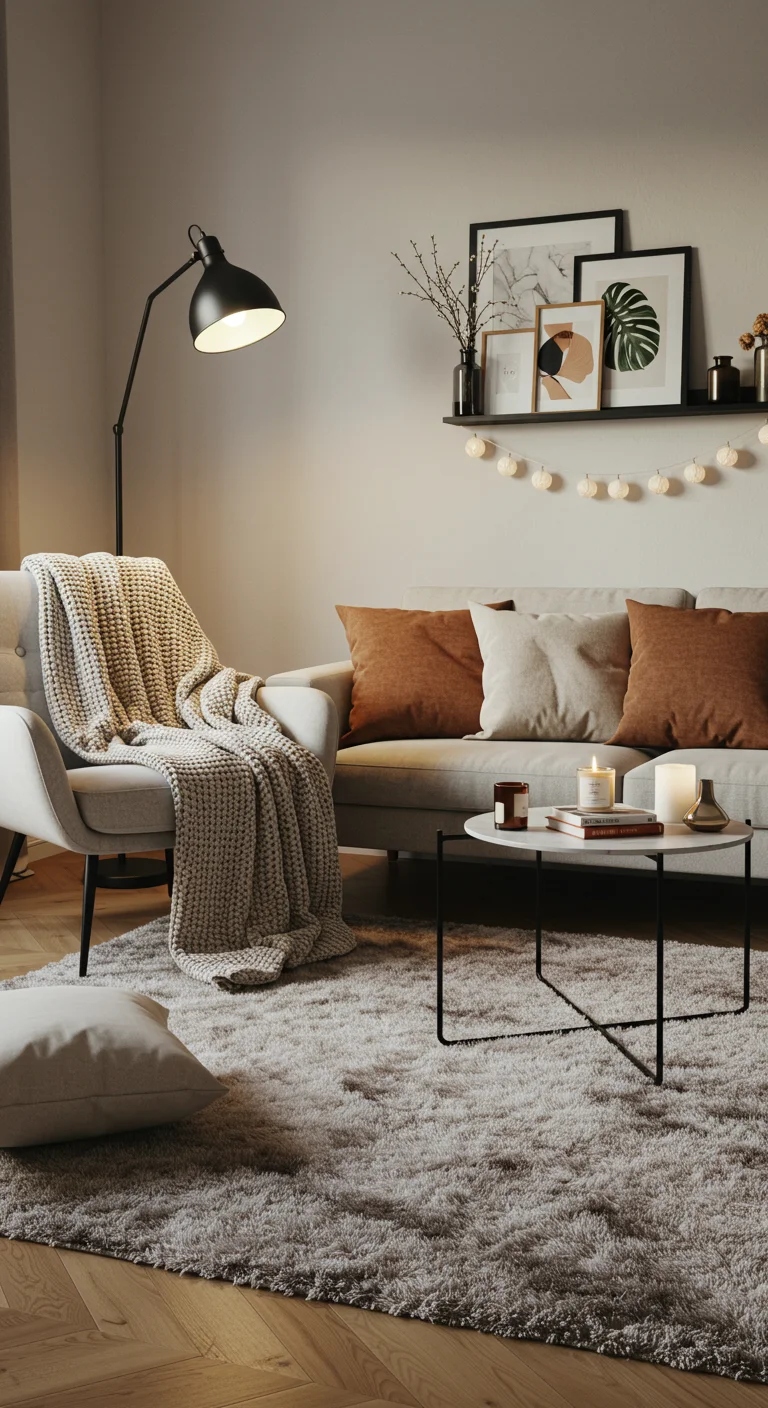
The art of layering is essential in transforming a small living room into a cozy haven. Begin by incorporating various textures, such as a plush area rug, soft throw blankets, and an array of decorative pillows, which can create depth and warmth in the space. Use a mix of materials—like velvet, knit, and linen—to add visual interest while keeping the color palette cohesive. Consider layering your lighting as well, combining ambient, task, and accent lights to create a welcoming atmosphere. Strategically place shelves or wall art to draw the eye upward, making the room feel more expansive. By thoughtfully combining these elements, you can craft an inviting environment that maximizes comfort without sacrificing style, making the most of every square inch in your small living room.
8. Floating Shelves: Stylish Storage That Doesn’t Take Up Floor Space
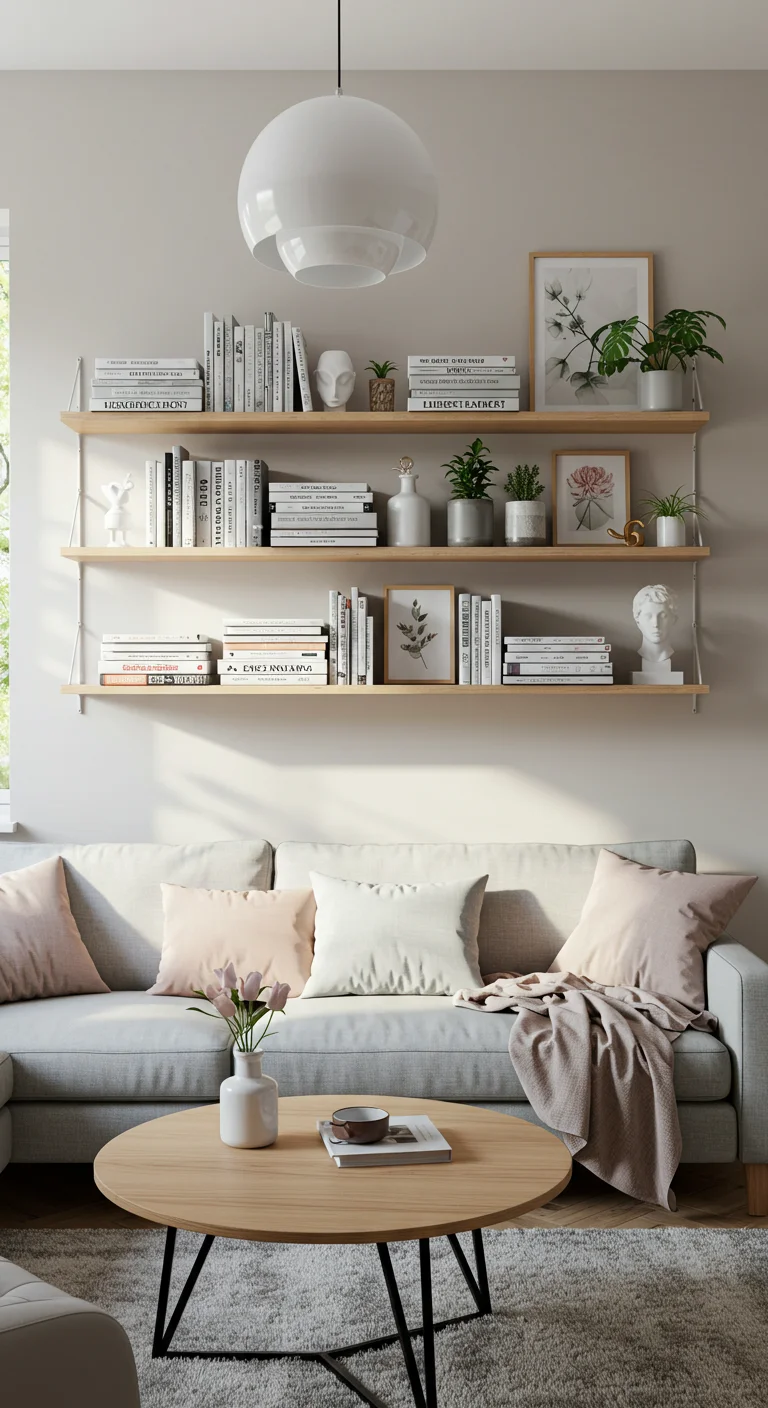
Floating shelves are an innovative solution for maximizing vertical space in small living rooms while adding a touch of style. By mounting shelves directly on the wall, you free up valuable floor space, creating an illusion of a larger area. These shelves can be used to display books, plants, or decorative items, contributing both functionality and aesthetics to your room. Opt for a mix of sizes and shapes to create visual interest, or choose sleek, minimalist designs for a modern look. Additionally, consider using materials that complement your existing decor, such as wood for warmth or metal for an industrial edge. With the right arrangement, floating shelves can transform blank walls into dynamic focal points that enhance the overall appeal of your small living room.
9. Custom Built-Ins: Tailored Solutions for Every Nook and Cranny
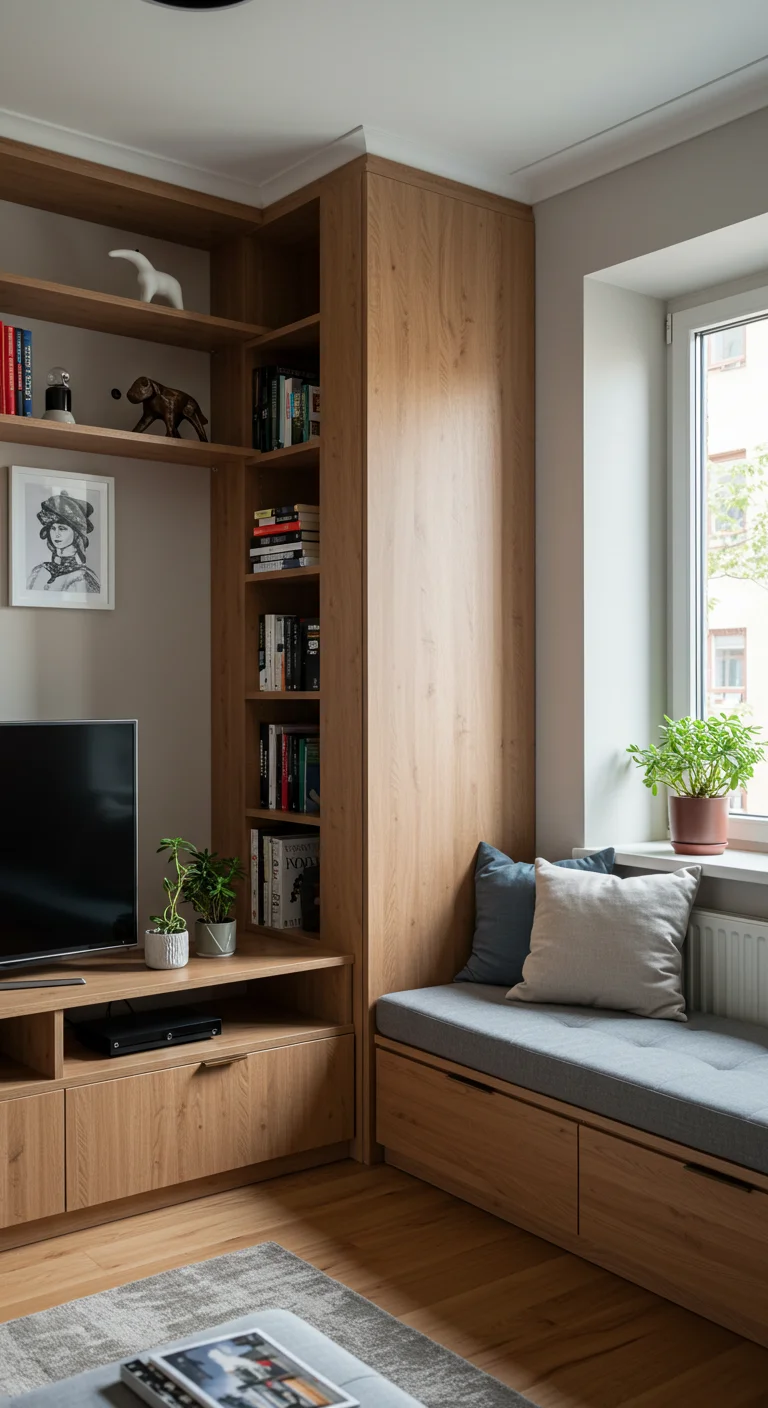
Custom built-ins are an excellent way to maximize every inch of your small living room, providing tailored storage solutions that fit seamlessly into your space. These bespoke pieces can be designed to suit any nook or cranny, whether it’s a corner shelf for books, a media unit around an entertainment system, or a window seat with hidden storage. By optimizing vertical space and utilizing often-overlooked areas, such as above doorways or beneath stairs, you can keep your living area organized and stylish. Additionally, custom built-ins can be crafted to reflect your personal style, integrating materials and colors that complement your existing décor, ultimately enhancing the overall aesthetic of your small living room while maintaining functionality.
10. The Magic of Area Rugs: Defining Spaces in Open Layouts
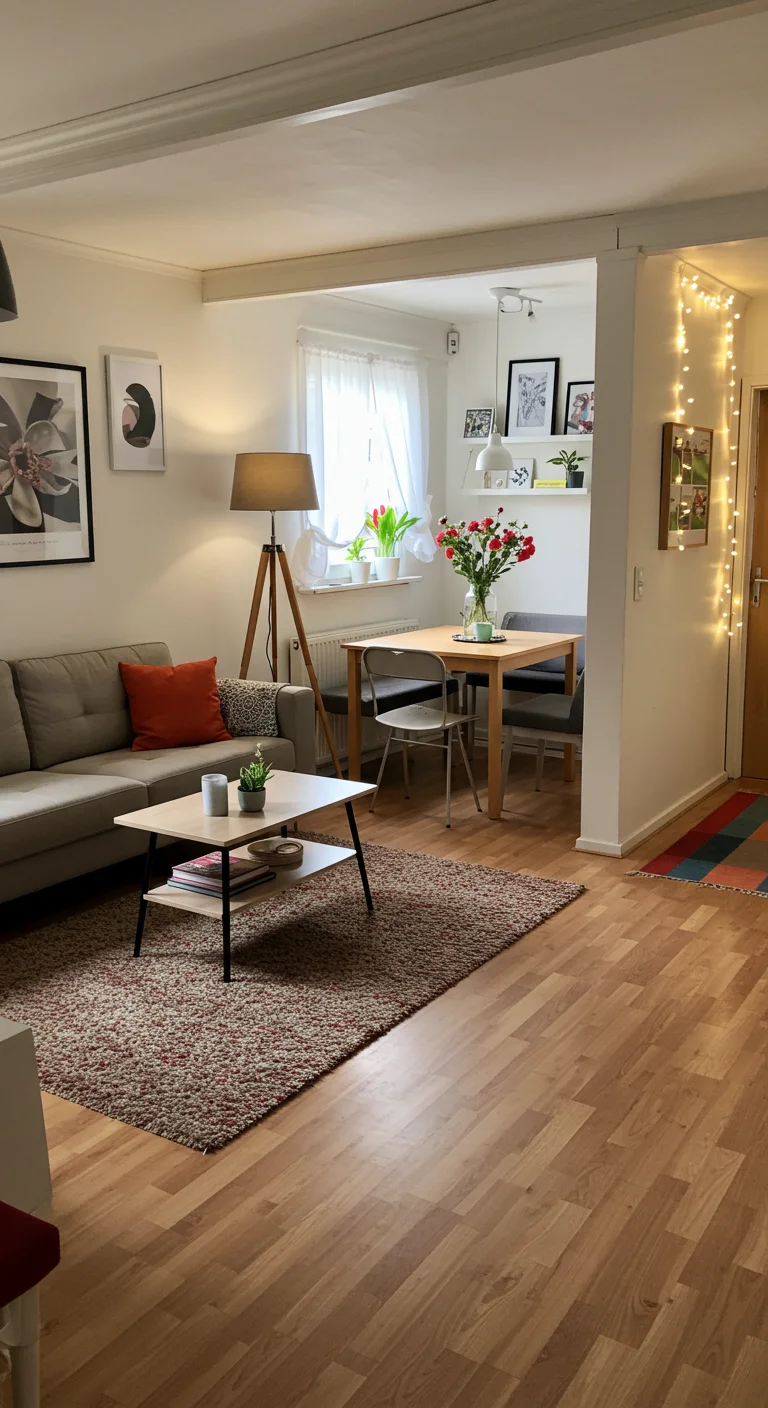
Area rugs are an essential element in defining spaces within open layouts, especially in small living rooms where boundaries can be blurred. By strategically placing area rugs, you can create distinct zones for various activities, such as lounging, dining, or working. For example, a plush rug under a coffee table helps anchor the seating area, while a vibrant runner can delineate a pathway or highlight a dining nook. Choose rugs that complement your color scheme and textures, as this will enhance the overall aesthetic of your space. Additionally, opting for layered rugs can add depth and interest without overwhelming the room. Remember, the right area rug not only adds warmth and style but also plays a crucial role in making your small living space feel organized and inviting.
11. Light and Bright: How Natural Light Can Transform Your Living Room
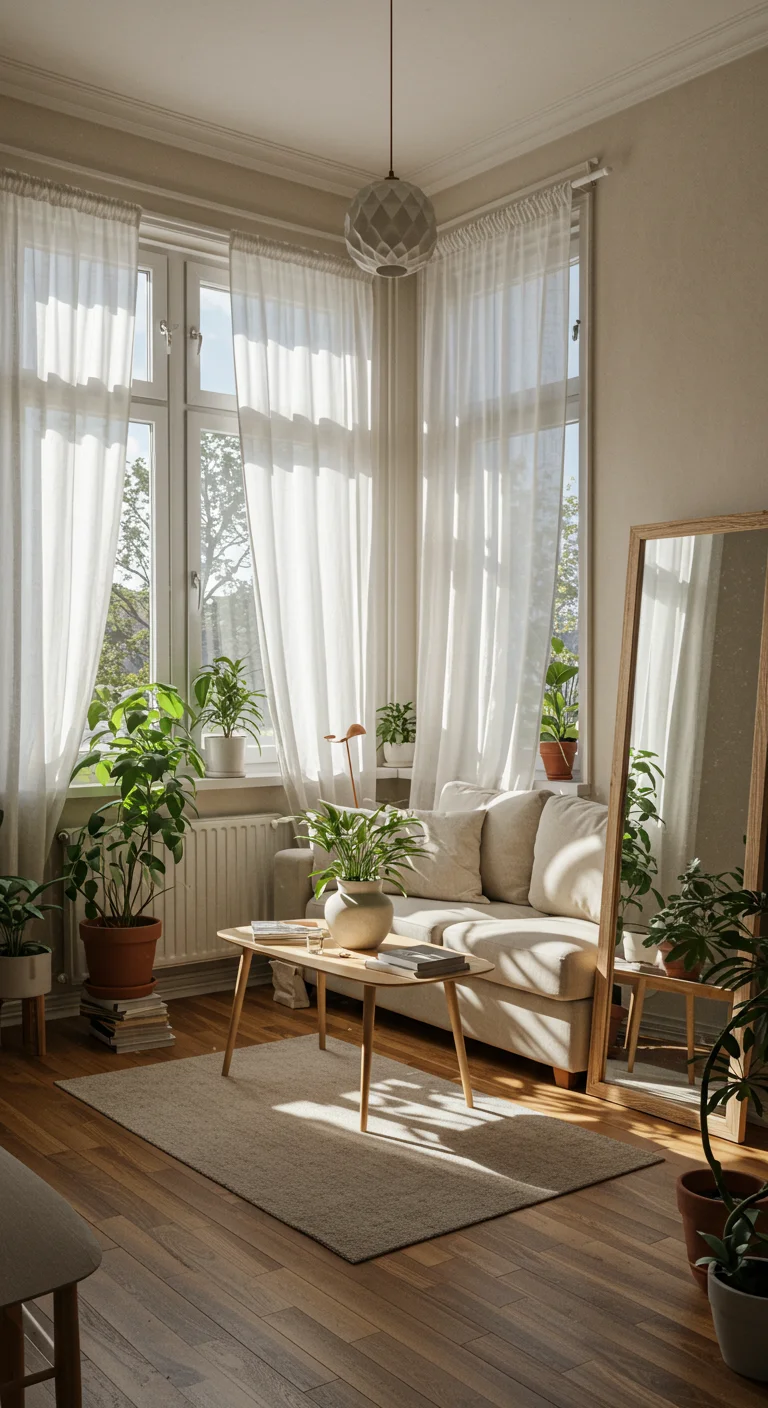
Natural light can dramatically enhance the perception of space in a small living room, making it feel airy and inviting. To maximize the benefits of natural light, consider using sheer drapes or no window treatments at all to allow sunlight to flood in. Opt for light-colored walls and furniture, which reflect sunlight and create a brighter ambiance. Mirrors can also play a crucial role; strategically placing them opposite windows can amplify light and provide the illusion of a larger area. Additionally, keep clutter to a minimum and arrange furniture in a way that doesn’t obstruct light sources, ensuring your living room feels open and spacious. Incorporating plants can add life, while their green tones beautifully complement the natural light, creating a vibrant and tranquil atmosphere.
12. Pocket Doors: Stylish Solutions for Tight Spaces
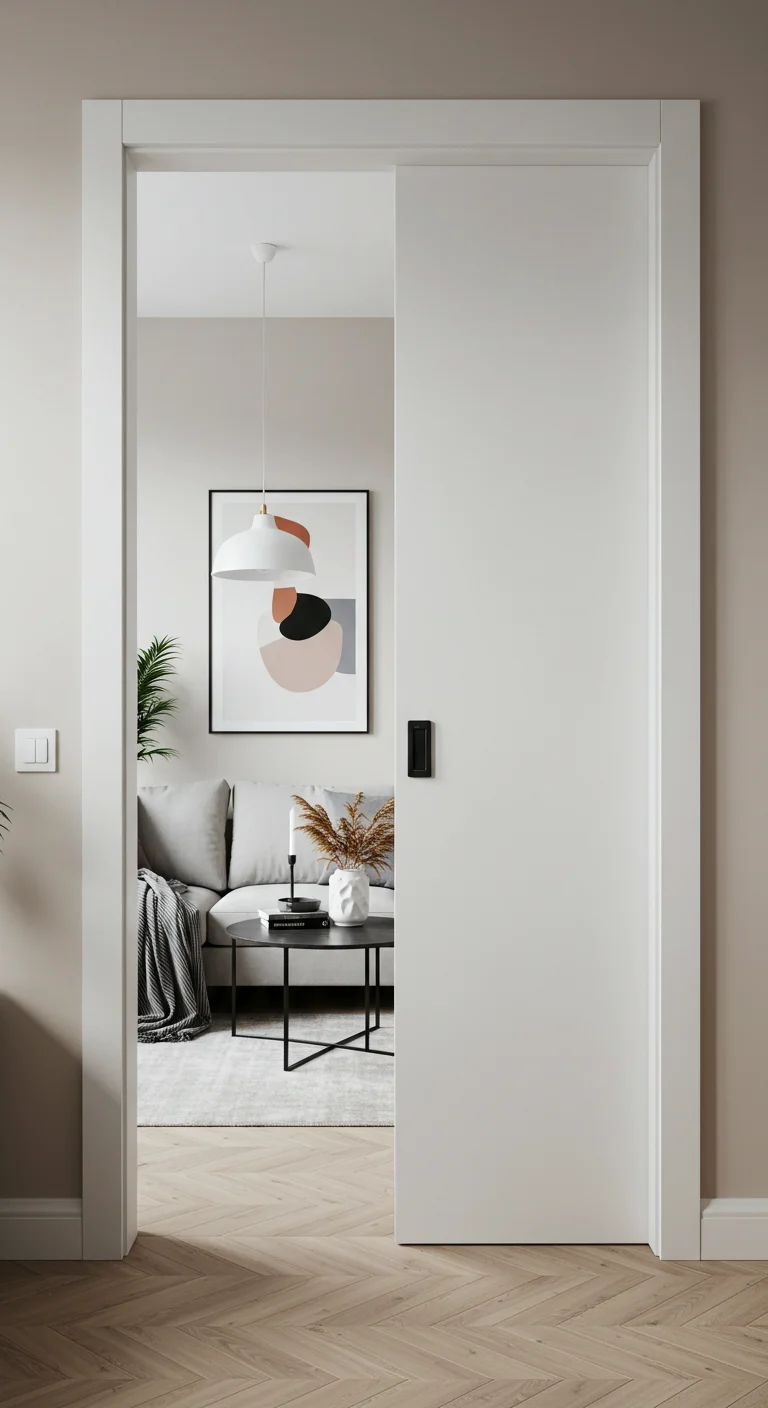
Pocket doors are an elegant and space-saving solution for small living rooms, enabling you to maximize every inch while maintaining a stylish aesthetic. Unlike traditional swinging doors, pocket doors slide into the wall when opened, eliminating the need for clearance space and creating a seamless flow between rooms. This feature is particularly beneficial in compact areas where every square foot counts. Available in various designs and finishes, pocket doors can add a modern touch to your decor while also providing privacy when needed. Whether you’re separating a living room from a home office or creating an entryway to a cozy nook, pocket doors can enhance functionality without compromising style.
13. Wall-Mounted Desks: The Perfect Blend of Functionality and Style
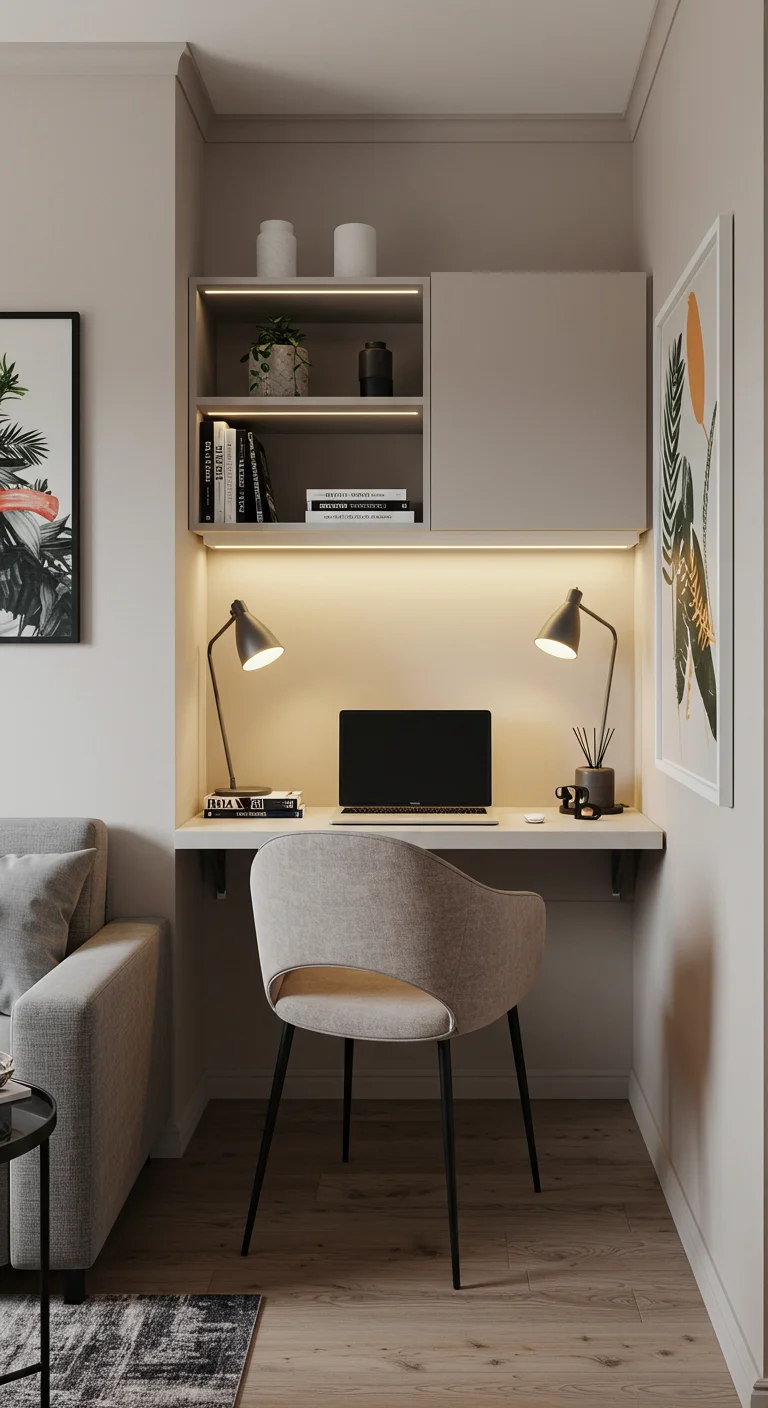
Wall-mounted desks are an innovative solution for small living rooms, seamlessly combining functionality and style. These space-saving desks are designed to be attached to the wall, freeing up valuable floor space while providing a dedicated area for work or study. Available in various styles and finishes, they can enhance the aesthetic of your room, making them an ideal choice for modern or minimalist interiors. Many wall-mounted desks come with built-in storage options like shelves or compartments, allowing you to keep your workspace organized without cluttering the room. By choosing a wall-mounted desk, you not only maximize your living space but also create a multifunctional area that can adapt to your needs, making it a perfect addition for small living environments.
14. Compact Dining Options: Folding Tables for Flexible Living
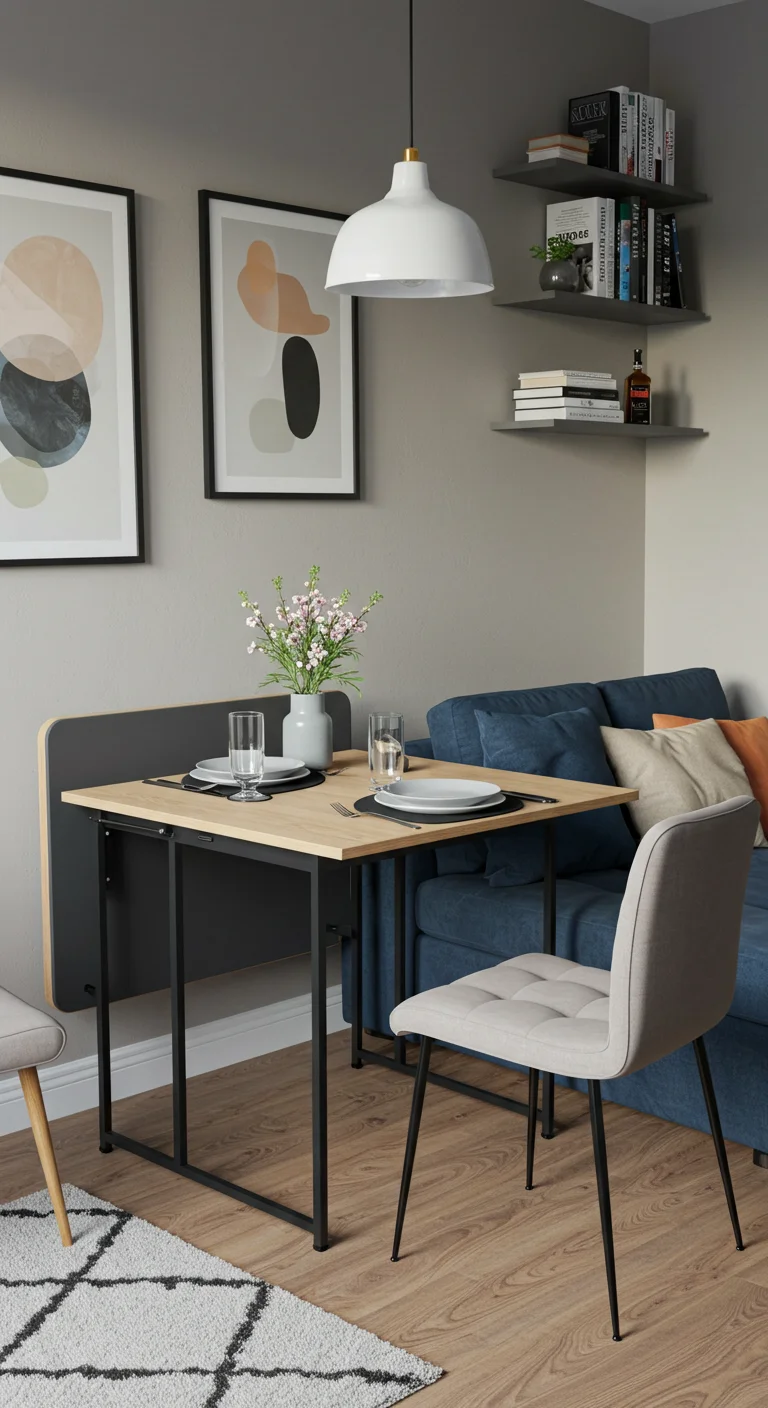
Folding tables are an essential solution for maximizing space in small living rooms, offering flexibility without sacrificing style. These versatile pieces can serve multiple functions—from a dining table for two to a workspace when needed. Look for designs that complement your decor, such as modern wooden tables with sleek lines or foldable metal options for an industrial touch. When not in use, they can be easily collapsed and stored away, freeing up valuable floor space. Some innovative models even include built-in storage, allowing you to keep dining essentials close at hand yet neatly tucked away. Utilizing folding tables not only enhances functionality but also encourages a clutter-free environment in compact living spaces.
15. Use of Curtains: Tricks to Create Illusions of Height and Space
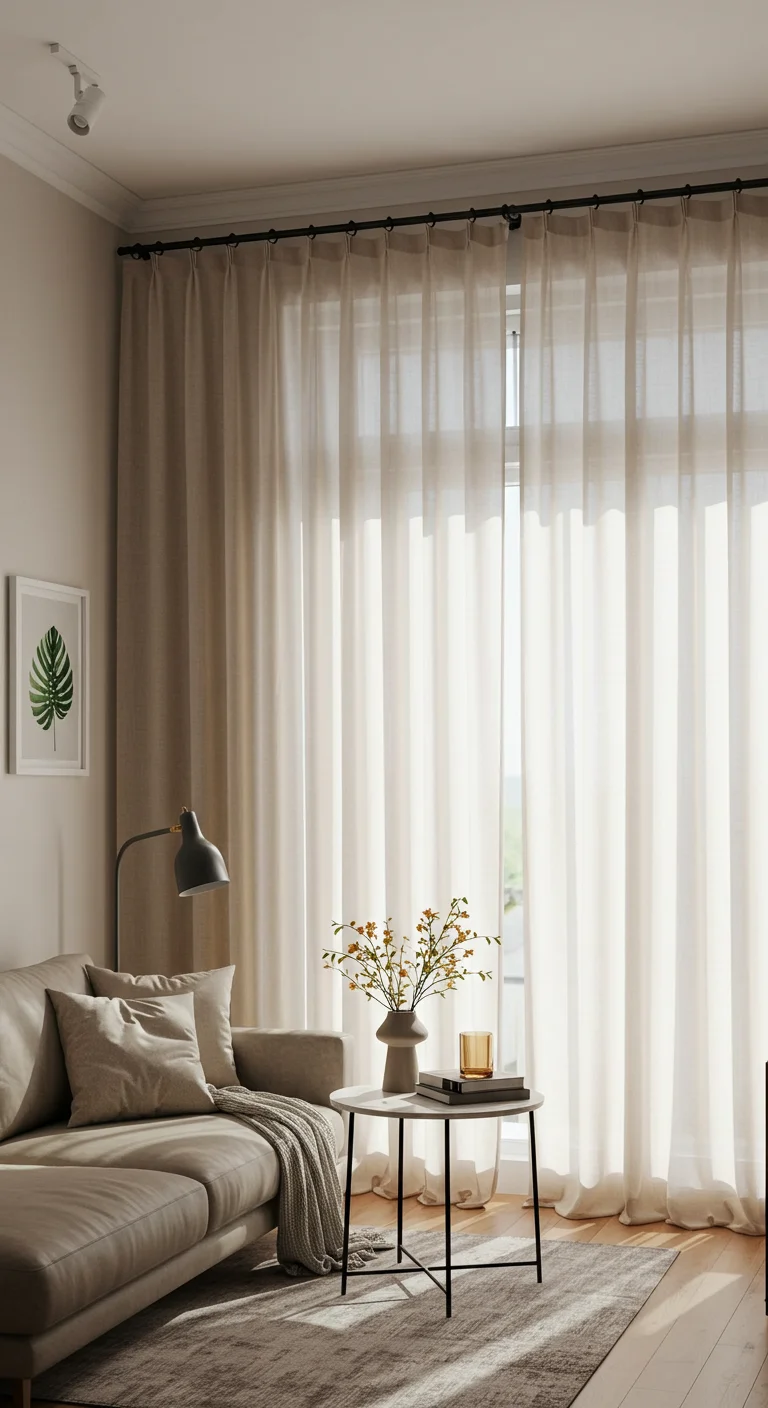
Using curtains effectively can dramatically alter the perception of space and height in a small living room. Opt for floor-to-ceiling curtains in light, airy fabrics to create an illusion of taller ceilings, drawing the eye upward and making the room feel more expansive. Hanging the curtain rod closer to the ceiling rather than above the window frame also enhances this effect. Additionally, consider using sheer curtains to allow natural light to filter through while maintaining privacy; this openness contributes to a more spacious atmosphere. Choosing a solid color palette for the curtains can unify the room’s design, preventing visual clutter and creating a harmonious look.
16. Statement Pieces: Bold Decor That Doesn’t Compromise Space
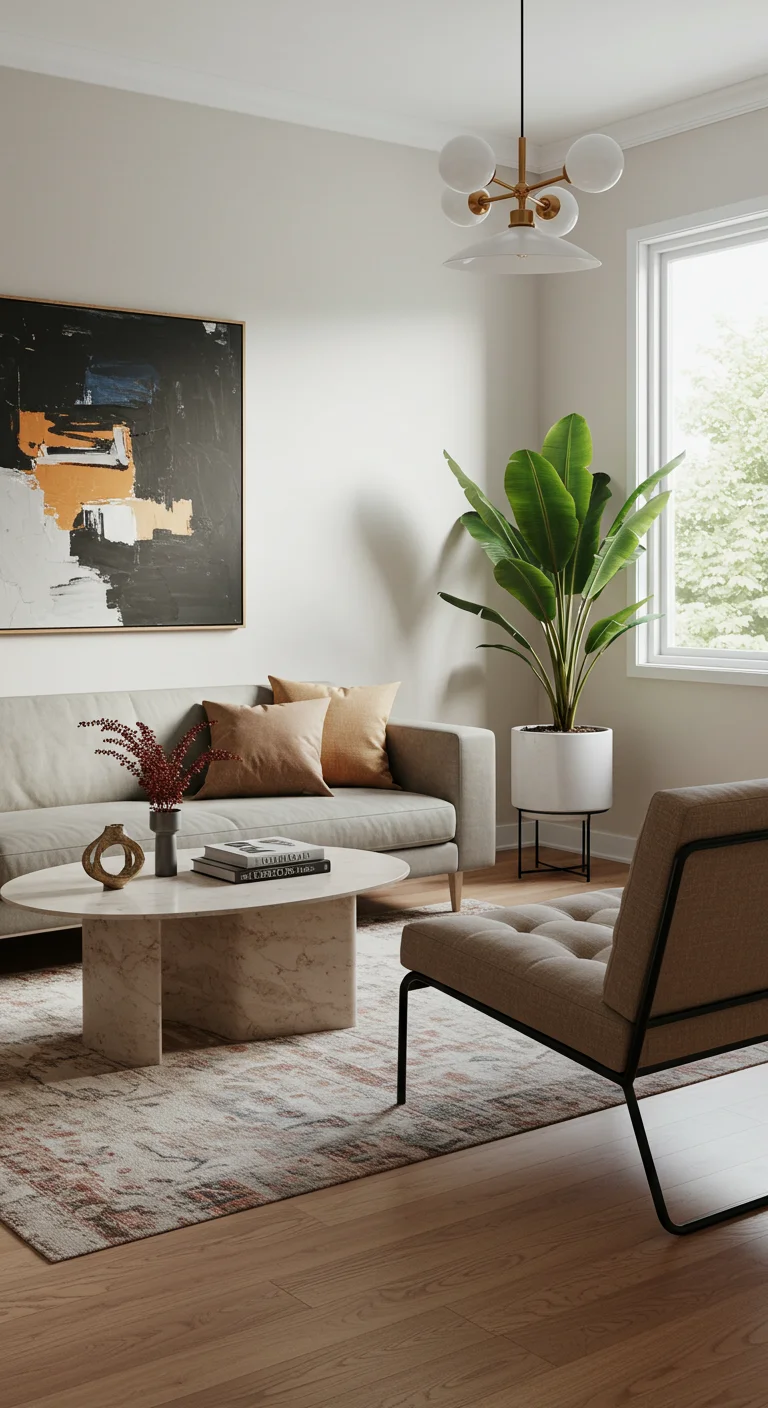
Incorporating statement pieces into a small living room can create a focal point that enhances the overall design without overwhelming the space. Choose a standout item such as a bold art piece, a uniquely shaped coffee table, or an oversized plant to draw the eye and add personality. Opt for designs that reflect your style while ensuring they are proportionate to the room’s scale. For example, a large abstract painting can add vibrancy without taking up floor space, while a chic, sculptural chair can serve as both seating and decor. By thoughtfully selecting these pieces, you can express your individuality while maintaining an inviting atmosphere that feels spacious and organized.
17. Indoor Plants: Bringing Life to Small Living Spaces
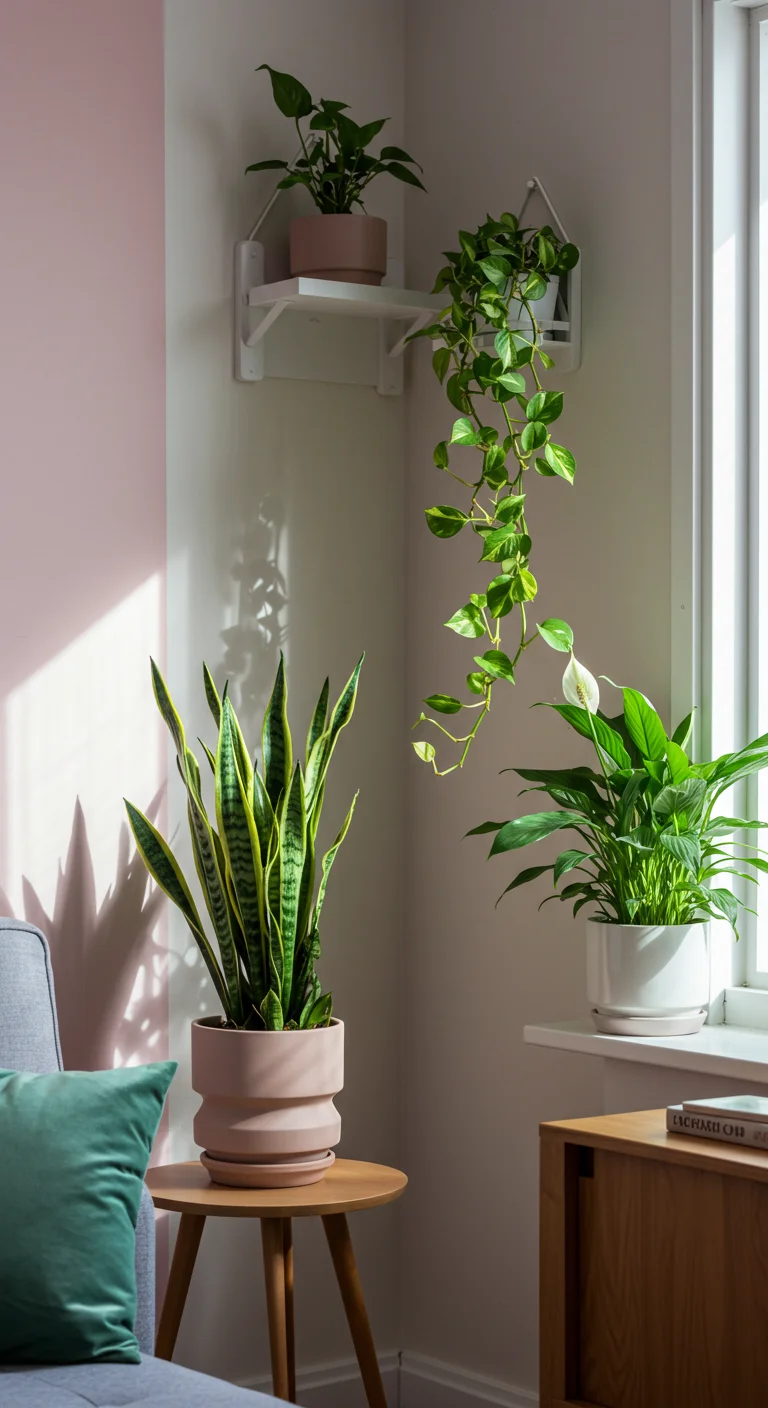
Indoor plants are an excellent way to bring life and vibrancy to small living spaces, enhancing both aesthetics and air quality. Consider incorporating a variety of plants that thrive in low-light environments, such as snake plants, pothos, or peace lilies. Utilize vertical space by placing hanging planters or wall-mounted shelves to display greenery without sacrificing floor area. Grouping plants in different heights and textures can create a visually appealing focal point, while also allowing for easy maintenance. Furthermore, plants can serve as natural dividers, helping to define separate areas in an open-plan living room. By selecting the right plants and arranging them thoughtfully, you can create a refreshing oasis that makes your small living room feel larger and more inviting.
18. Strategically Placed Lighting: Brightening Up Dark Corners
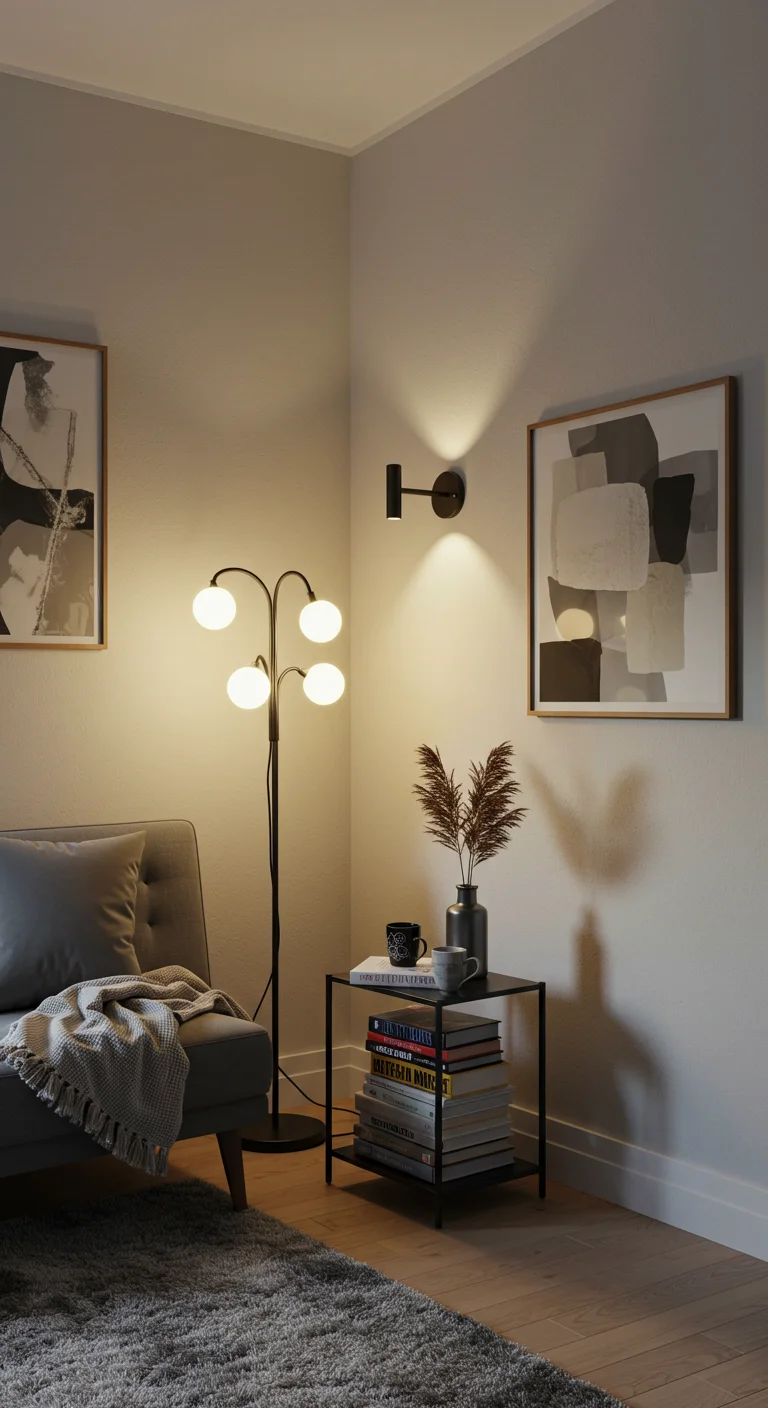
Strategically placed lighting can transform dark corners of your small living room into inviting, functional spaces. Use a combination of floor lamps, wall sconces, and table lamps to create layers of light that brighten up shadowy areas without overwhelming the room. Consider placing a tall floor lamp in a corner to draw the eye upward, or install wall sconces to highlight artwork and add depth. For small spaces, opt for fixtures with a sleek design that don’t take up valuable floor space. Additionally, using warm light bulbs will create a cozy atmosphere, making the room feel more spacious and welcoming. By enhancing the lighting in dark corners, you can effectively expand the visual perception of your living area while creating a warm ambiance that invites relaxation and conversation.
19. Nesting Tables: The Versatile Solution for Limited Surface Area
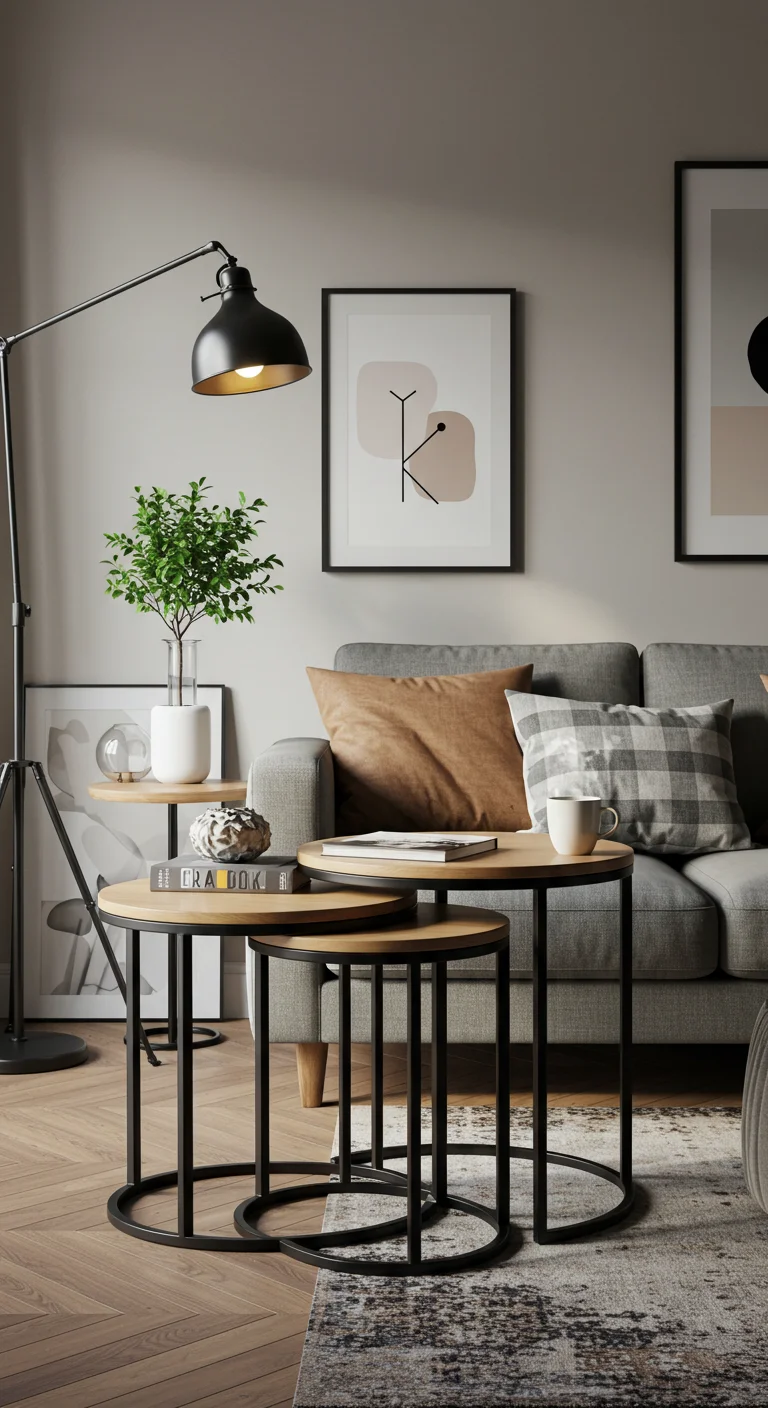
Nesting tables are an ideal solution for small living rooms where maximizing surface area is essential. These versatile pieces of furniture can be arranged together for a unified look or separated to create additional surfaces when needed, making them perfect for entertaining or everyday use. When not in use, they can be tucked away neatly, freeing up floor space and enhancing the room’s flow. Available in various styles, materials, and sizes, nesting tables can complement any decor theme—from modern minimalist to cozy rustic. Consider selecting a set with a unique design or vibrant color to serve as a functional focal point while ensuring that the tables remain practical and adaptable to your space’s needs.
20. Creative Use of Corners: Corner Sofas and Shelving Units
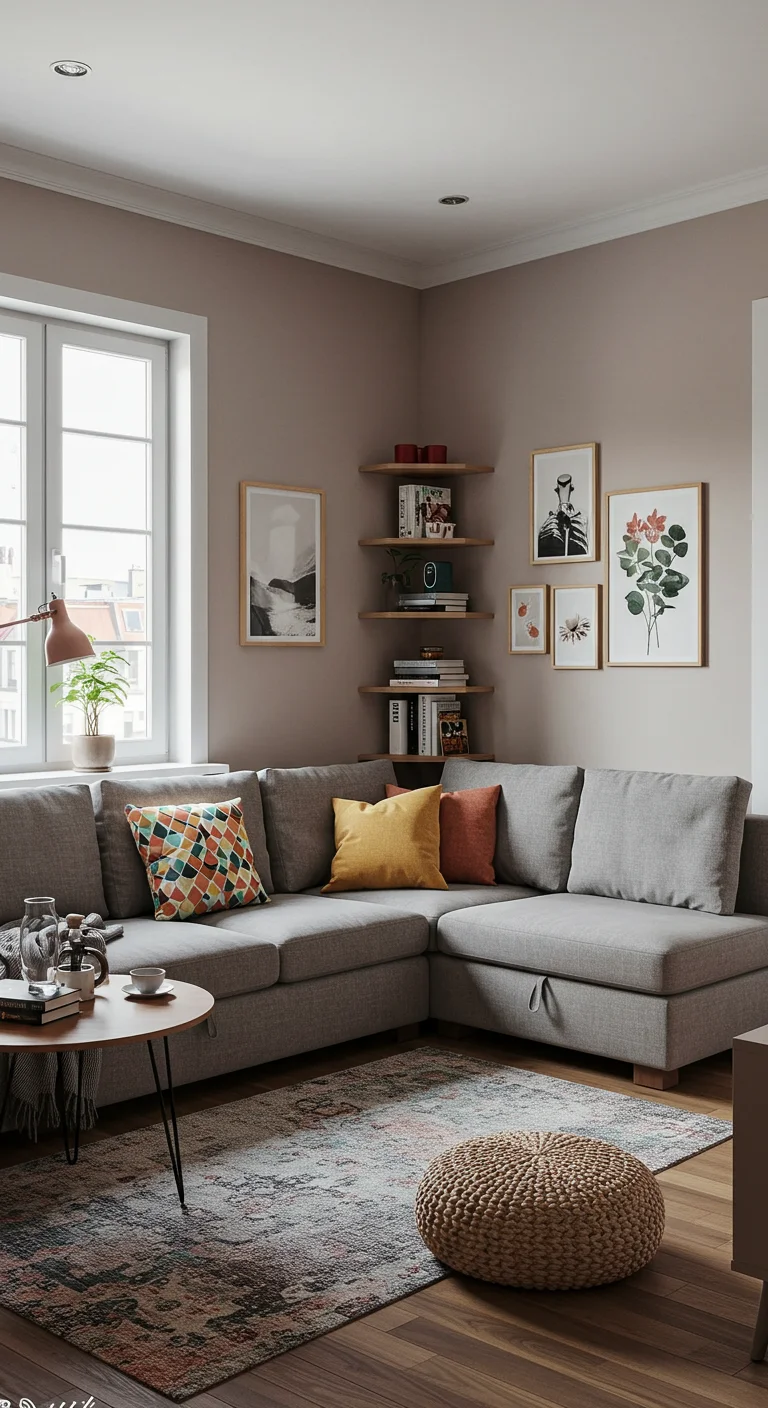
Maximizing corners in small living rooms can transform often overlooked areas into functional and stylish spaces. Corner sofas, designed to fit snugly into tight spots, provide ample seating without sacrificing room flow. These versatile pieces can serve as a cozy gathering point while enhancing visual interest. Complementing this with corner shelving units allows for efficient use of vertical space, offering a perfect solution for displaying books, plants, or decorative items. By utilizing both corner sofas and shelving, you create a harmonious balance between comfort and functionality, ensuring that every square inch of your small living room serves a purpose while avoiding clutter.
21. The Role of Color Blocking in Maximizing Visual Space
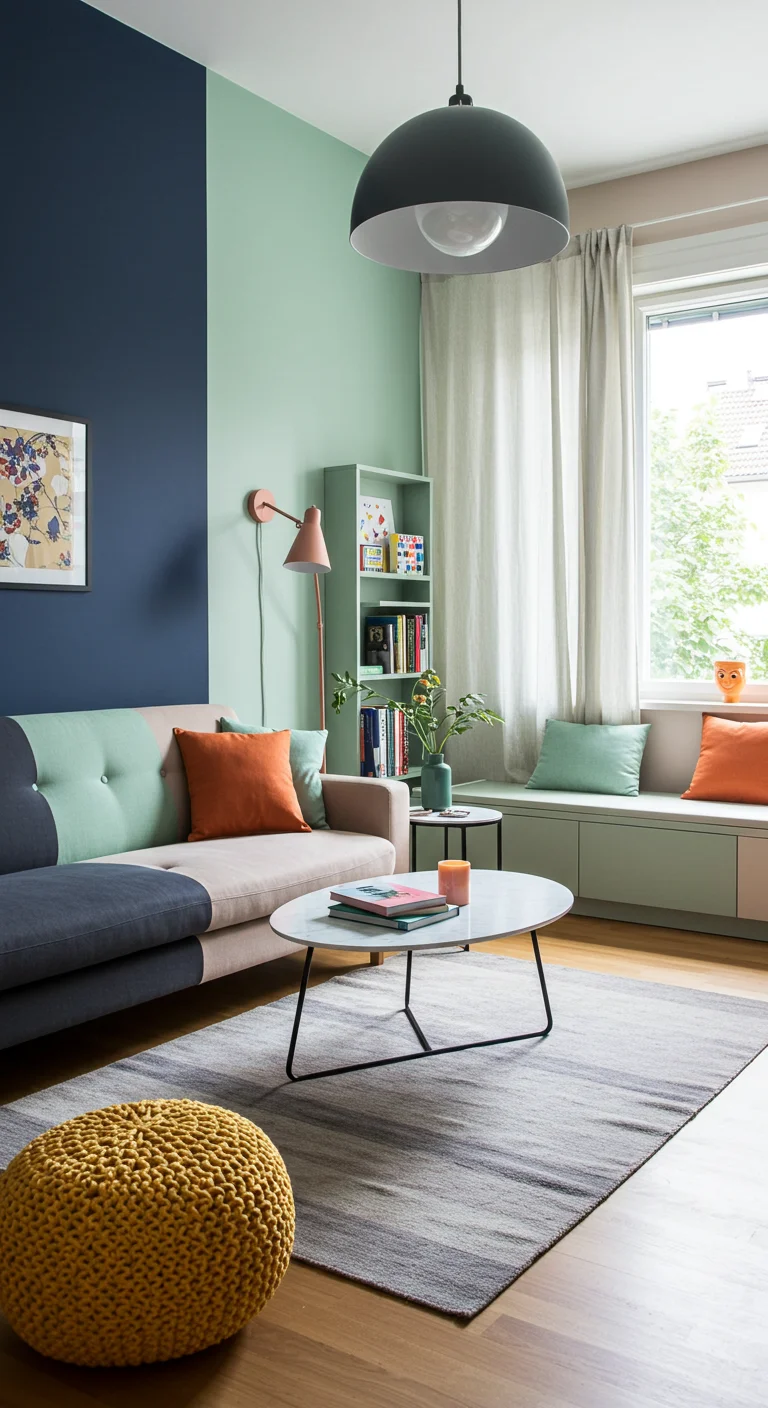
Color blocking is an innovative design technique that can significantly enhance the perception of space in small living rooms. By using contrasting colors in distinct zones, you can create a sense of structure and depth, making the area feel larger than it actually is. For instance, a bold, dark hue on one wall can anchor the room, while lighter, complementary colors on adjoining walls can brighten the space and reflect light. This strategic use of color not only delineates different functional areas—like a cozy reading nook or a vibrant entertainment zone—but also adds visual interest and personality. To maximize impact, consider incorporating color-blocked furniture or accessories that echo the wall colors, creating a cohesive look that draws the eye upward, ultimately enhancing the overall spacious feel of the room.
22. Textured Walls: Adding Depth Without Clutter
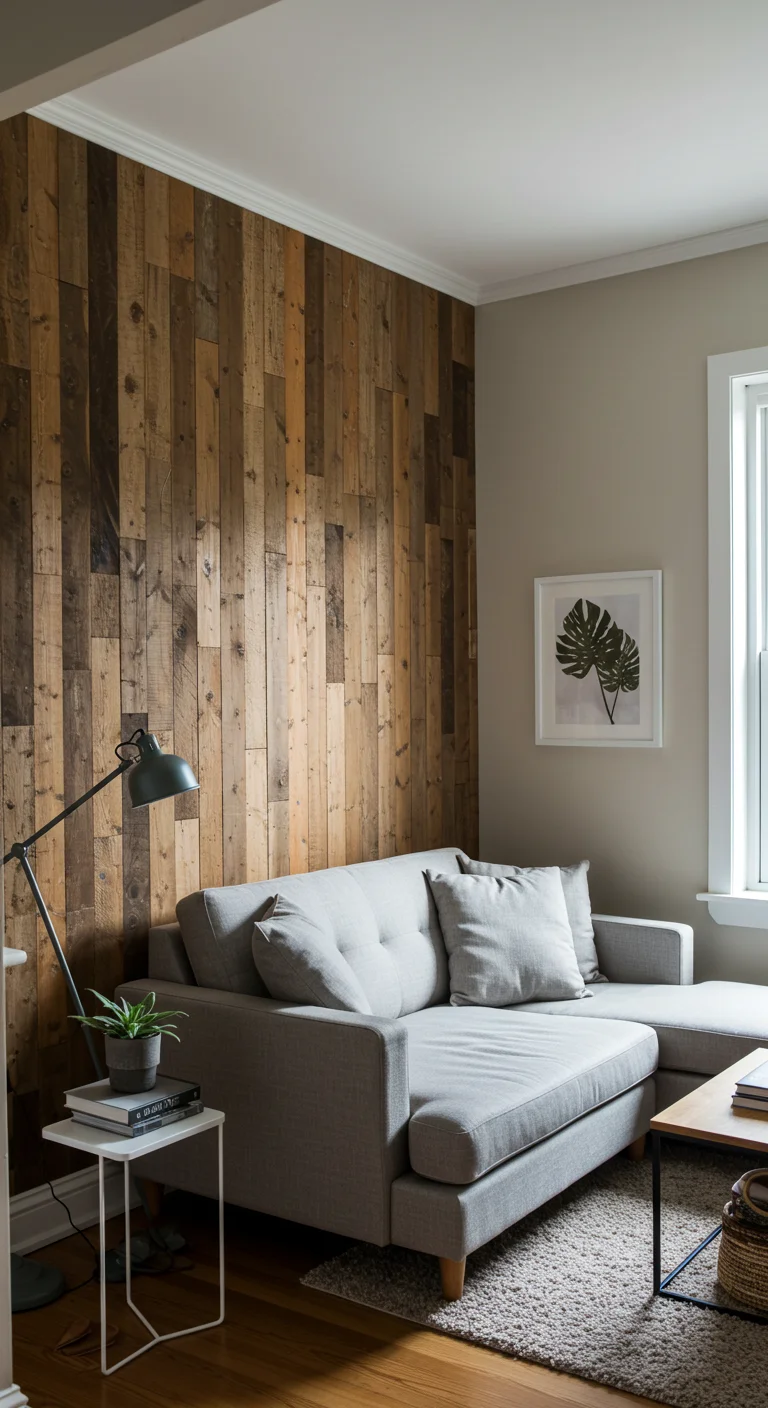
Textured walls are an innovative way to add depth and character to a small living room without overwhelming the space. Rather than relying on busy patterns or excessive decor, consider using materials like reclaimed wood, plaster, or textured paint to create visual interest. A feature wall with a subtle texture can draw the eye and make the room feel more expansive. Additionally, light and shadow play off textured surfaces, enhancing the ambiance and creating a cozy yet sophisticated atmosphere. Choose a neutral color palette to maintain an airy feel, while the texture brings warmth and personality, ensuring your small living area feels inviting and stylish without cluttering it with unnecessary furnishings.
23. Decluttering Tips: The Art of Letting Go
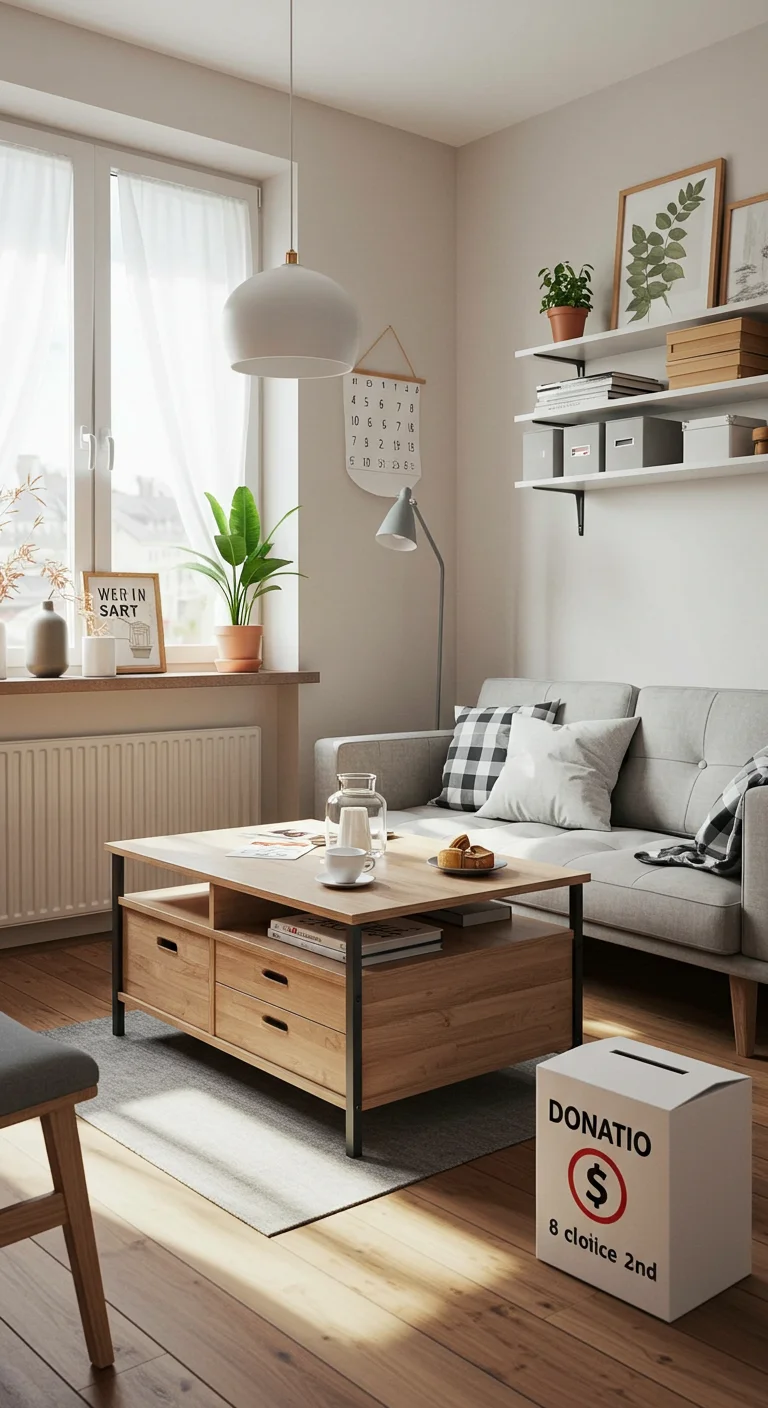
Decluttering is essential when maximizing space in small living rooms, and the key lies in the art of letting go. Start by assessing your belongings and categorizing them into three groups: keep, donate, and discard. Be honest with yourself—if an item hasn’t been used in the past year, consider parting with it. Employ the ‘one in, one out’ rule to maintain balance; for every new item brought in, another must go. Utilize multifunctional furniture, such as ottomans with storage or coffee tables with shelves, to minimize visible clutter. Lastly, practice regular decluttering sessions to keep your space organized and refreshing, ensuring that your living room remains a serene retreat rather than a chaotic space filled with unnecessary items.
24. DIY Upcycling: Transforming Old Furniture for New Purposes
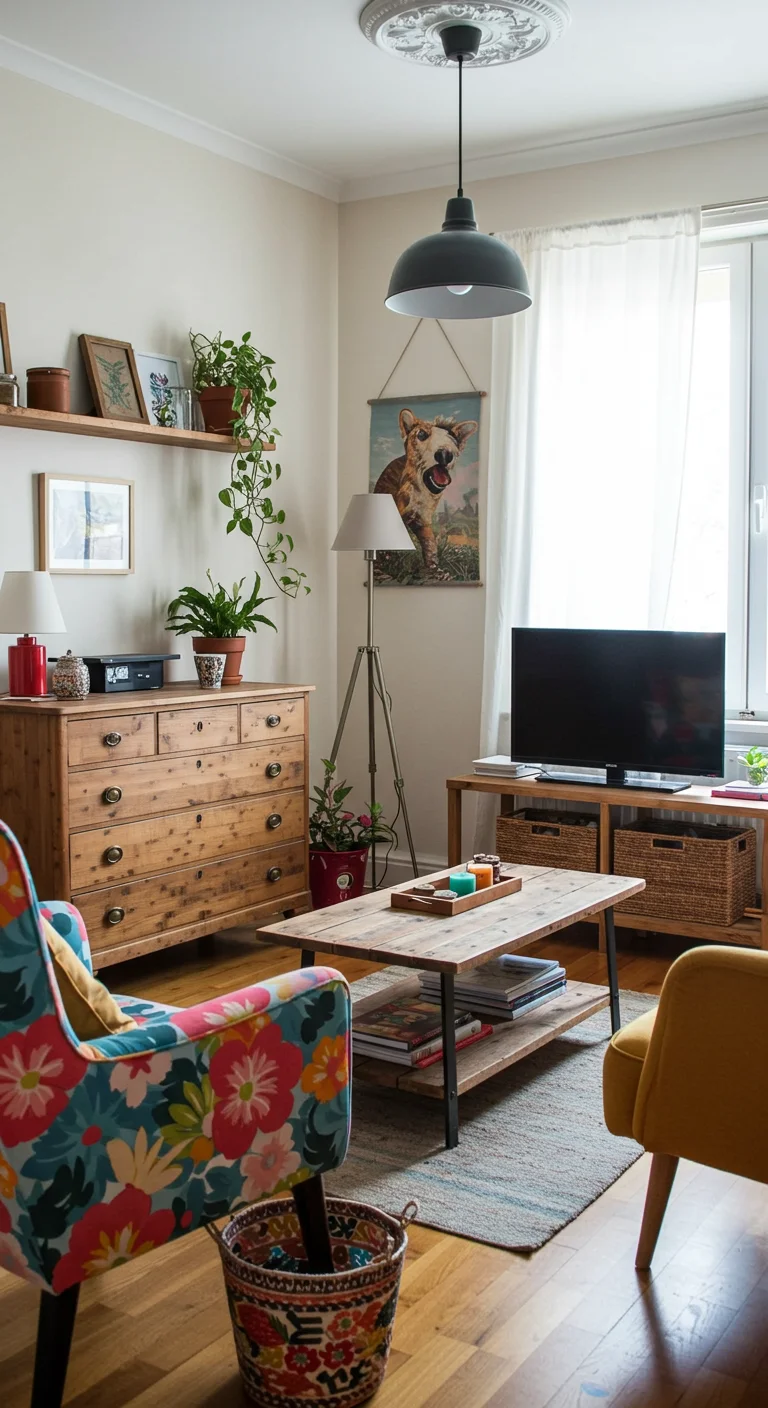
Upcycling old furniture is a fantastic way to maximize space and add character to small living rooms. Start by assessing items you already own, such as an unused dresser, an old coffee table, or mismatched chairs. With a little creativity, these pieces can be transformed into functional space-savers. For instance, a dresser can be repurposed into a stylish TV stand, while old chairs can be painted and reupholstered to create unique seating options. Use storage bins or baskets to fill drawers for organization, and consider adding wheels to items for easy mobility. By revitalizing old furniture, not only do you save money, but you also create personalized pieces that reflect your style and make the most of your limited space.
25. The Power of Artwork: Choosing Pieces That Expand Horizons
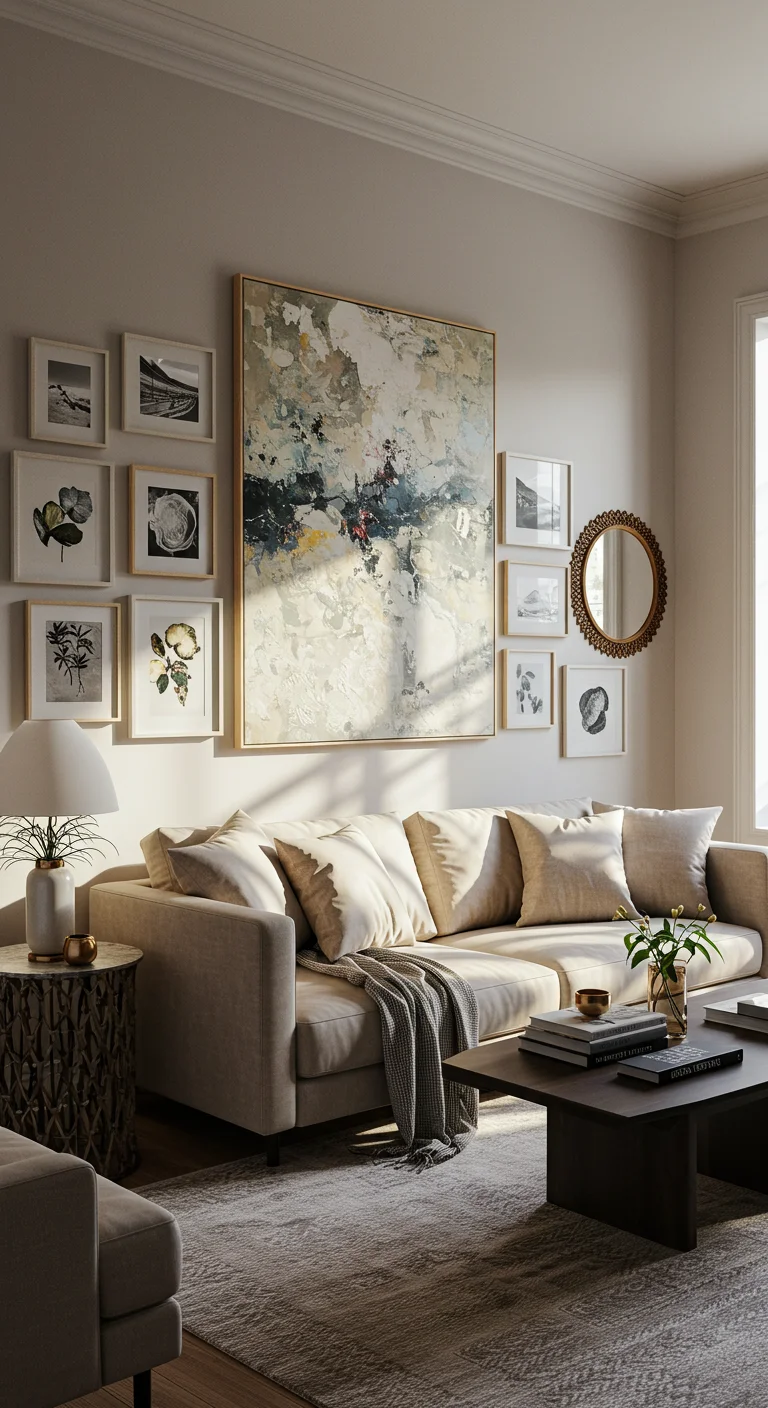
Artwork has the remarkable ability to transform a small living room by creating a sense of depth and expanding visual horizons. When selecting pieces, consider large-format artworks or a cohesive gallery wall that draws the eye upward, making ceilings feel higher. Opt for vibrant colors or abstract designs that evoke emotions and stimulate conversation, creating an inviting atmosphere. Mirrors framed as art can reflect light and give the illusion of more space, while nature-inspired scenes can instill a sense of calm. Choose a balance between bold statement pieces and subtle accents to harmonize the overall design, ensuring that every artwork not only reflects your personal style but also enhances the room’s spatial dynamics.
26. Cozy Nooks: Creating Inviting Spaces for Relaxation
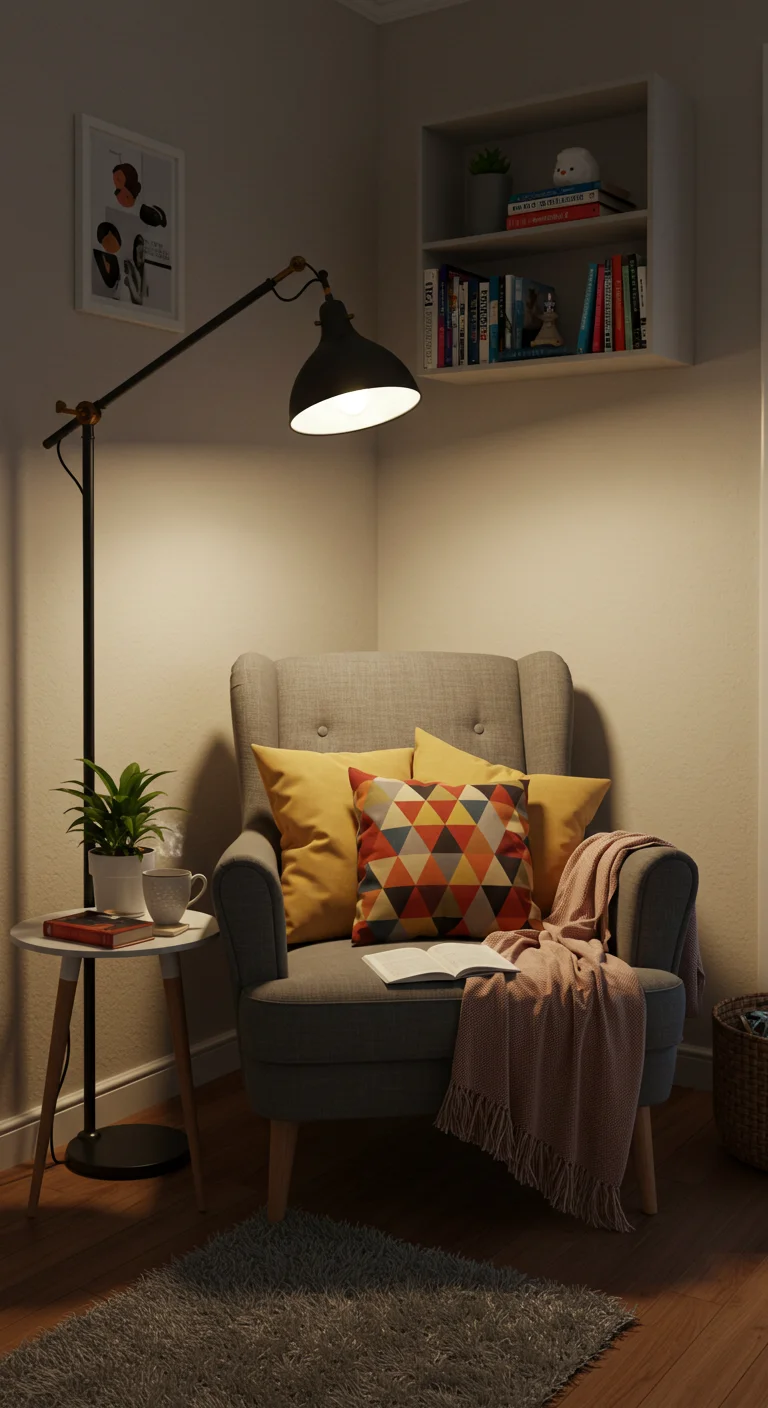
Cozy nooks are essential for transforming small living rooms into inviting retreats. To create a cozy nook, choose a corner or underutilized space and incorporate a comfortable chair or a small loveseat paired with soft cushions and a cozy throw blanket. A compact side table can hold your favorite book or a cup of tea, while a floor lamp or string lights provide warm, ambient lighting. Adding personal touches, such as framed photos or a small plant, enhances the space’s charm. Consider using a bookshelf or a floating shelf to display decorative items, maximizing vertical space while keeping the area organized. With these elements, your cozy nook will invite relaxation and provide a perfect escape within your small living room.
27. Smart Technology: Using Gadgets to Maximize Space
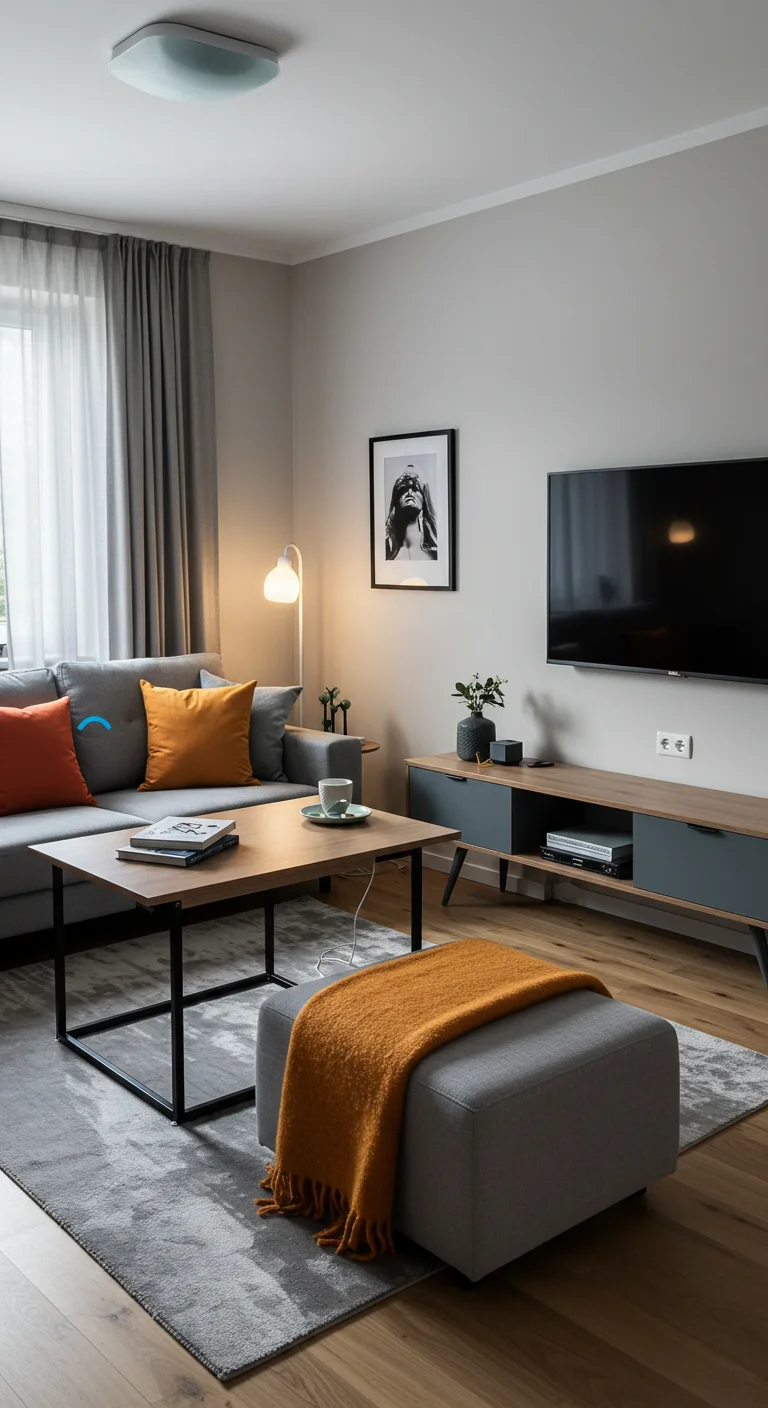
Smart technology can revolutionize the way we utilize space in small living rooms by integrating multifunctional gadgets that save both room and time. For instance, consider investing in smart furniture like a coffee table that can transform into a desk or a sofa with built-in charging ports and storage compartments. Smart home devices, such as voice-controlled lighting and temperature systems, can optimize the living environment without cluttering surfaces with switches and remotes. Additionally, wall-mounted smart TVs and audio systems can free up floor space while providing high-quality entertainment. By strategically incorporating these gadgets, you can create a seamless, efficient living area that feels spacious and modern, all while enhancing comfort and convenience.
28. Seasonal Swaps: Rotating Decor for Freshness and Function
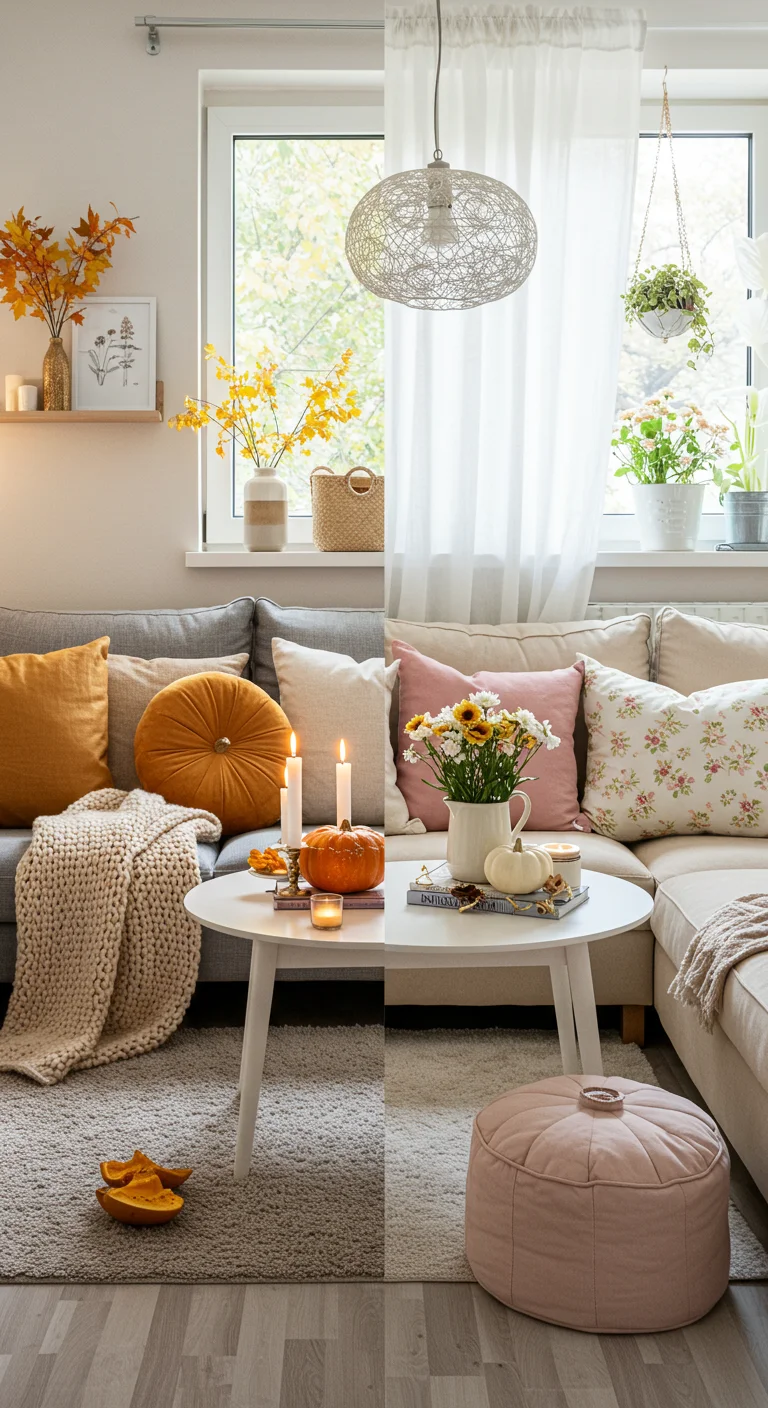
Seasonal swaps are a fantastic way to refresh your small living room while optimizing space and functionality. By rotating your decor according to the seasons, you not only keep the ambiance lively but also make room for functional items. For instance, during autumn, introduce cozy throws and warm-toned cushions, while in spring, opt for lighter fabrics and pastel colors. Use versatile storage solutions like decorative baskets or under-sofa bins to store off-season items, keeping your space uncluttered. Additionally, consider changing out artwork and centerpieces; a simple switch to seasonal prints can dramatically transform the mood of the room. This practice encourages creativity and ensures your small living room remains a vibrant and inviting space throughout the year.
29. The Final Touch: Personalizing Your Space with Meaningful Decor
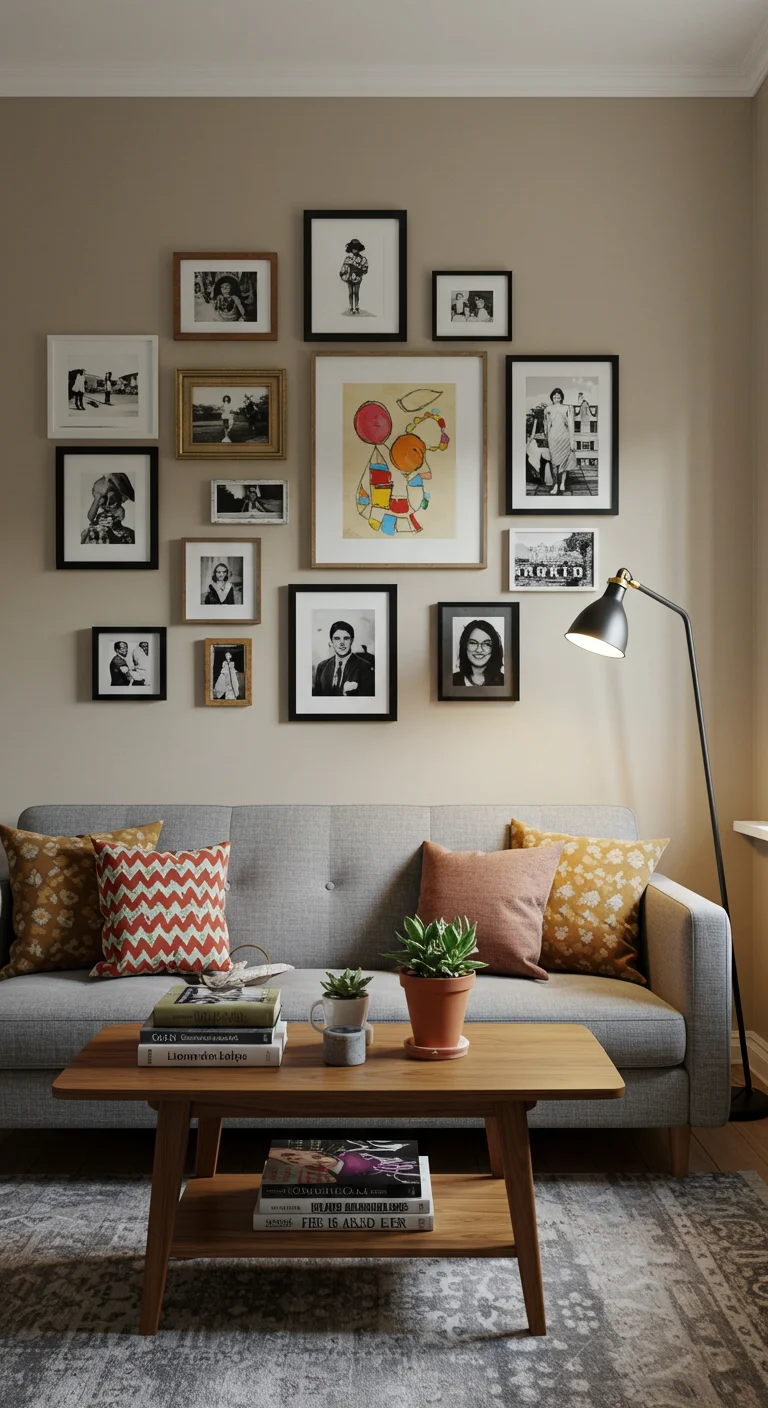
To truly make your small living room feel like home, incorporate meaningful decor that reflects your personality and experiences. Choose artwork, photographs, or handmade crafts that evoke positive memories or represent your interests. Consider using a gallery wall to display a curated collection of these pieces without overwhelming the space. Additionally, select decorative elements like cushions, vases, or books that not only serve a practical purpose but also tell a story or hold sentimental value. By thoughtfully integrating decor that resonates with you, your living room will become a cozy and inviting retreat, maximizing both comfort and style within its limited square footage.

